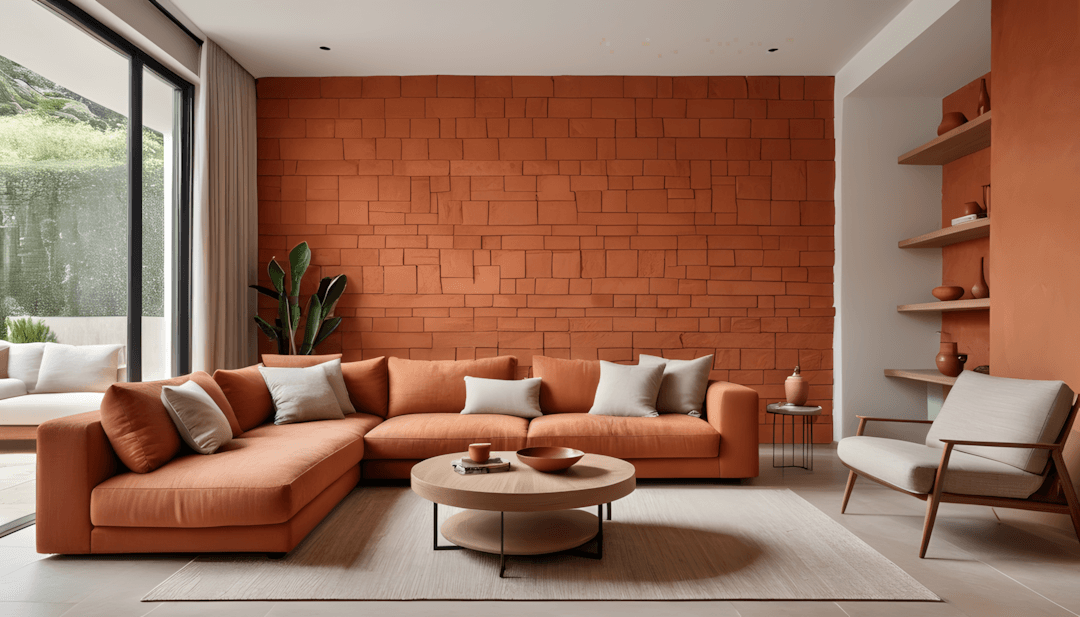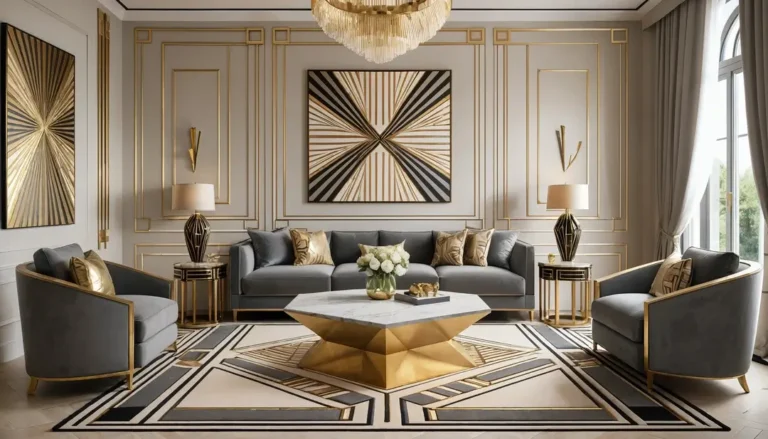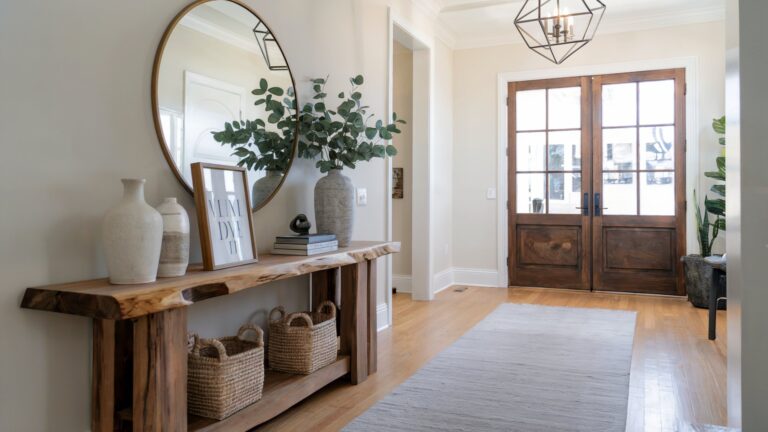In my experience working with homeowners on warm-toned interior renovations, I’ve observed that terracotta often creates remarkably welcoming and grounded living environments. Through various projects, I’ve learned that this earthy color typically provides both visual warmth and versatile styling options while maintaining an atmosphere that feels both sophisticated and genuinely comfortable for daily family life.
Note: For any structural modifications, electrical work, or installations mentioned in this article, always consult with licensed professionals to ensure safety and code compliance.
What makes terracotta particularly appealing to many homeowners is its ability to work within various design styles while providing natural warmth. I’ve found that people often choose this color approach because it typically creates spaces that feel both contemporary and timeless while accommodating different lighting conditions throughout the day.
The key to successful terracotta integration often lies in balancing its rich warmth with complementary neutrals and textures. Effective terracotta-inspired spaces typically embrace the color’s natural earthiness while incorporating elements that prevent the overall palette from becoming overwhelming or monotonous.
Here are 18 approaches for incorporating terracotta into living rooms that often work well in different home settings, based on observations from various warm-toned design projects.
1. Statement Wall Applications
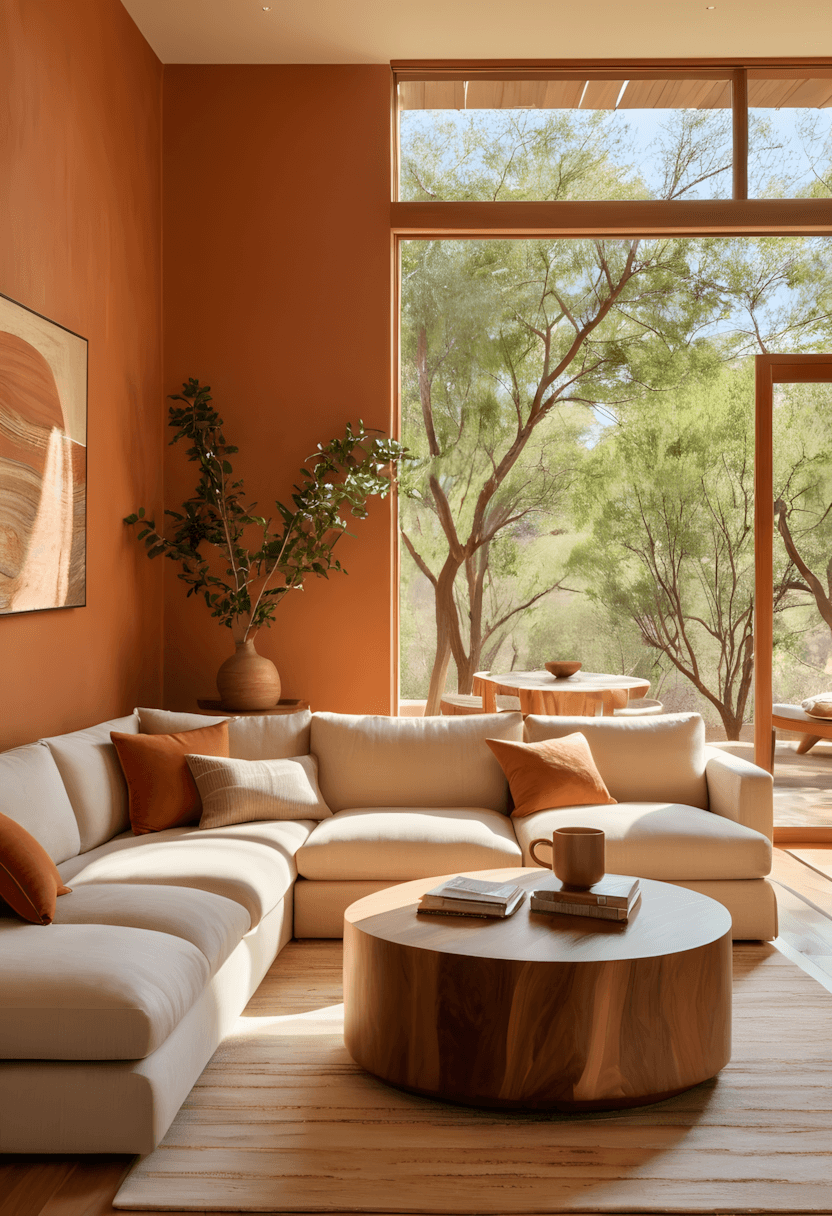
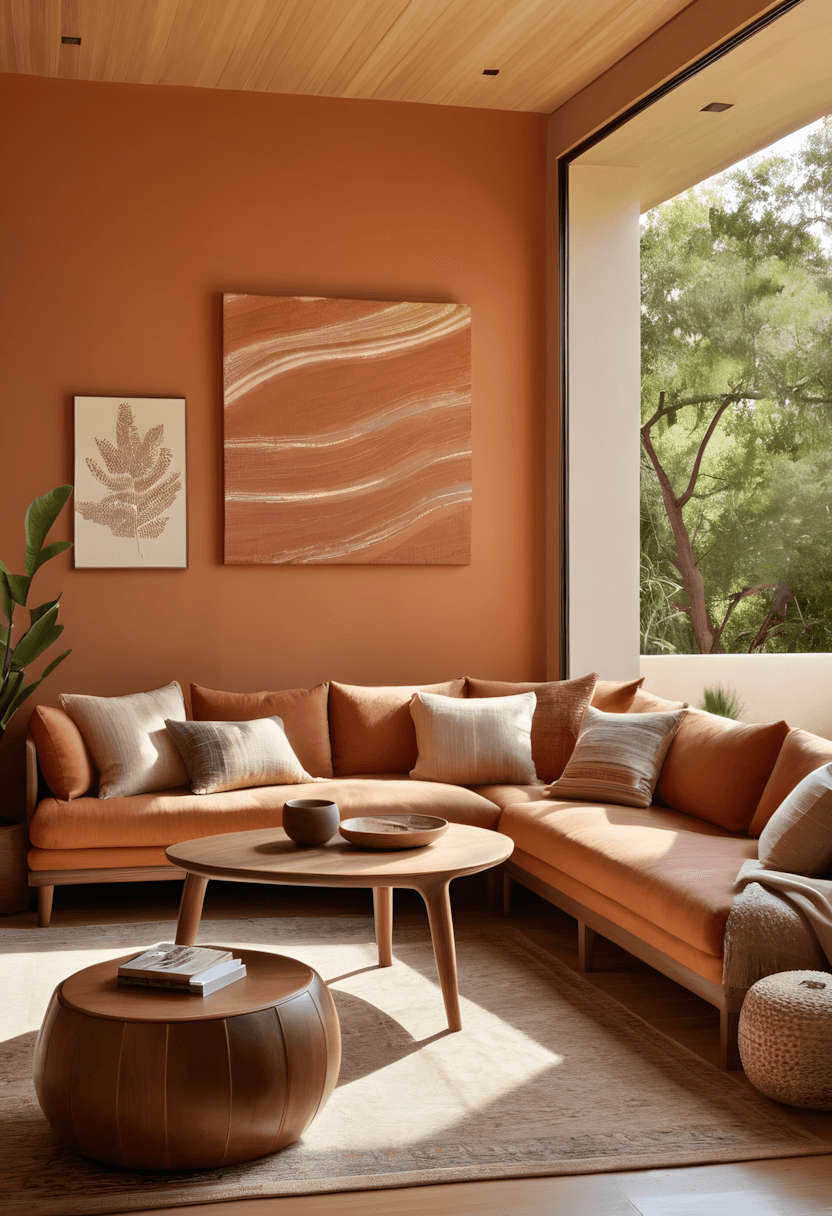
This color approach often appeals to homeowners wanting significant visual impact without overwhelming their entire space. Terracotta accent walls typically create dramatic focal points while providing warm backgrounds for furniture and artwork.
Design consideration: Single accent walls often provide the benefits of rich color while maintaining balance through neutral surrounding surfaces that prevent color saturation.
Practical benefit: Wall color changes typically offer affordable room transformations while providing flexibility to experiment with bold hues without major commitment.
2. Foundation Rug Integration
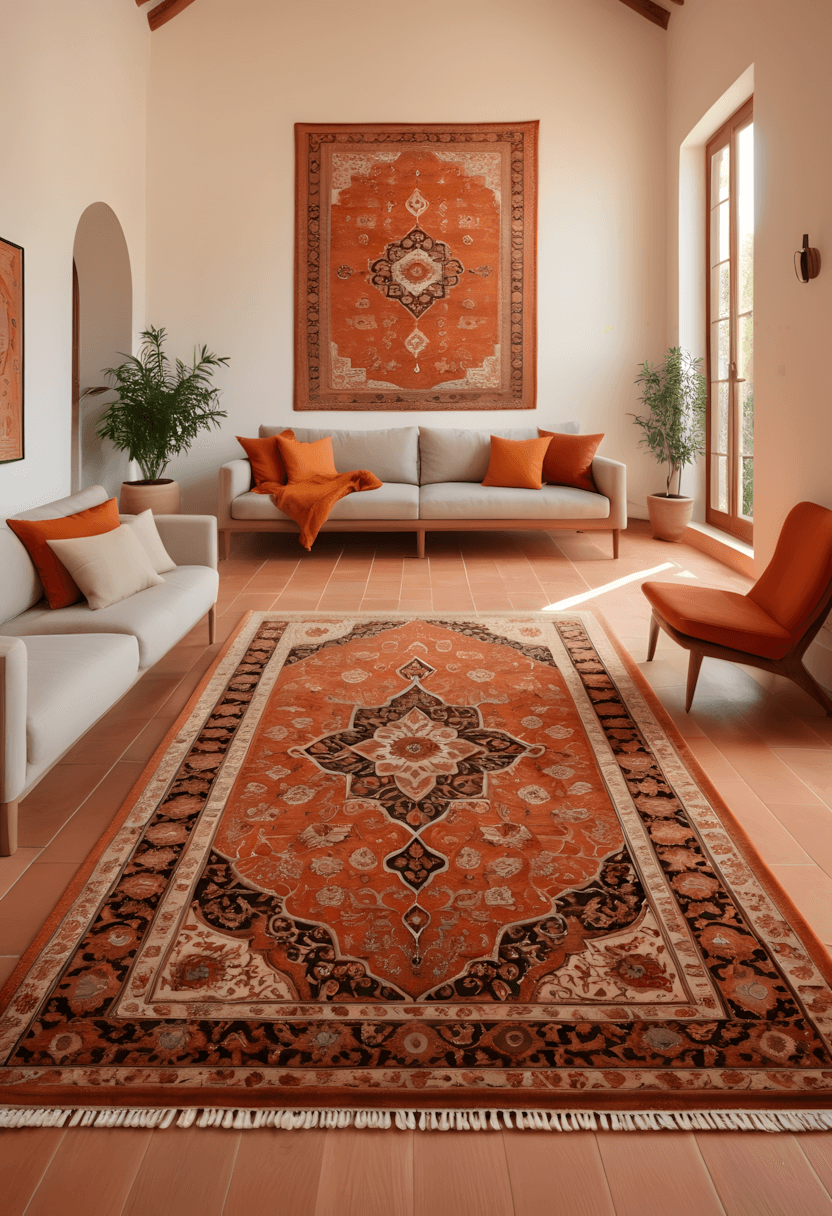
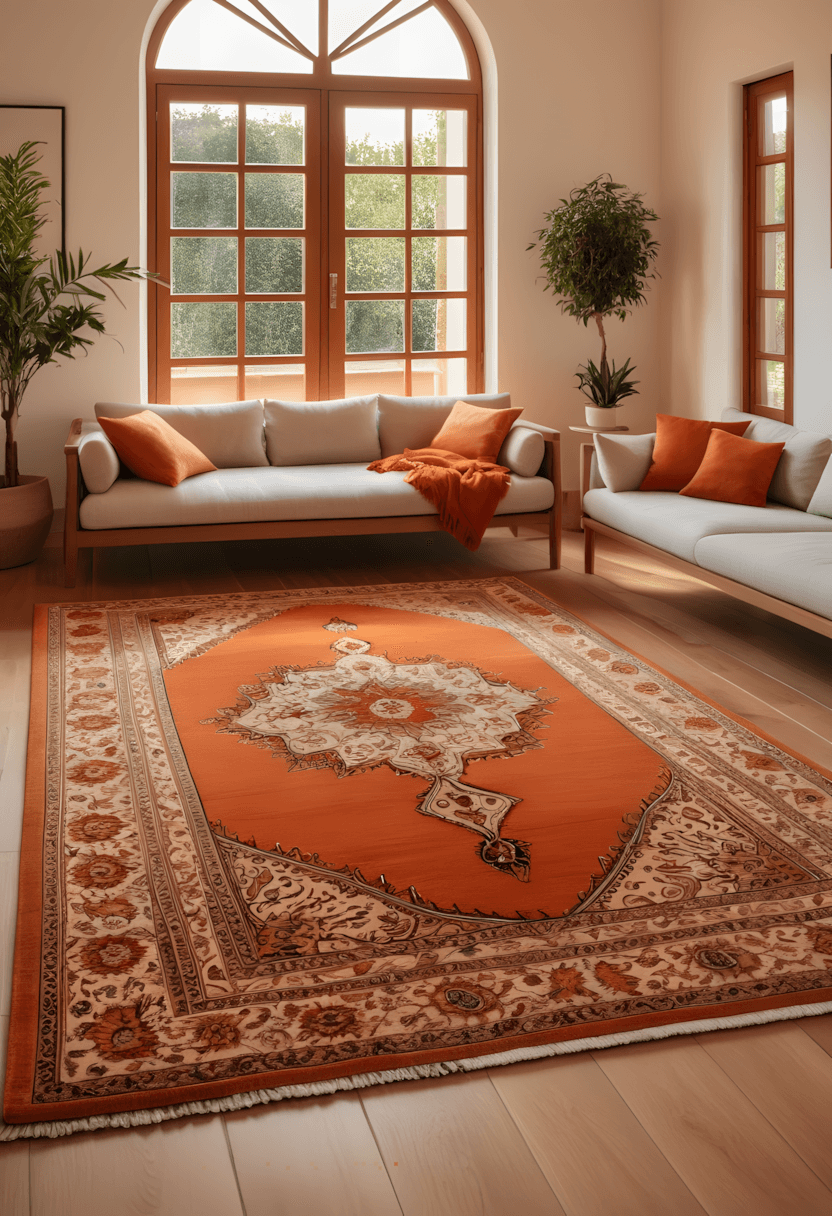
This flooring approach often appeals to those seeking both comfort and color introduction. Terracotta rugs typically anchor seating areas while providing warmth and texture that enhances the overall room comfort.
Design consideration: Large area rugs often define conversation spaces while rich colors can coordinate multiple furniture pieces within cohesive design schemes.
Practical benefit: Quality rugs typically protect underlying flooring while offering opportunities to introduce significant color that can be changed as design preferences evolve.
3. Accent Pillow Coordination
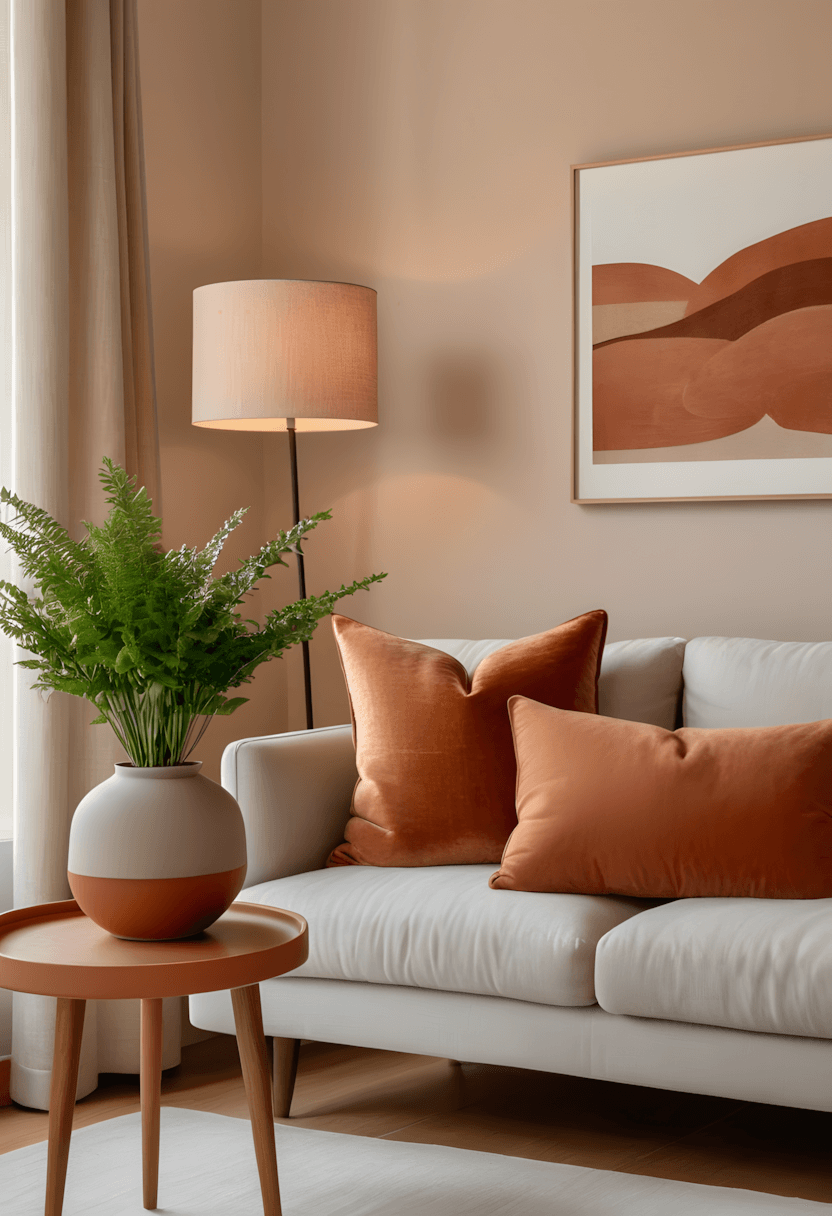
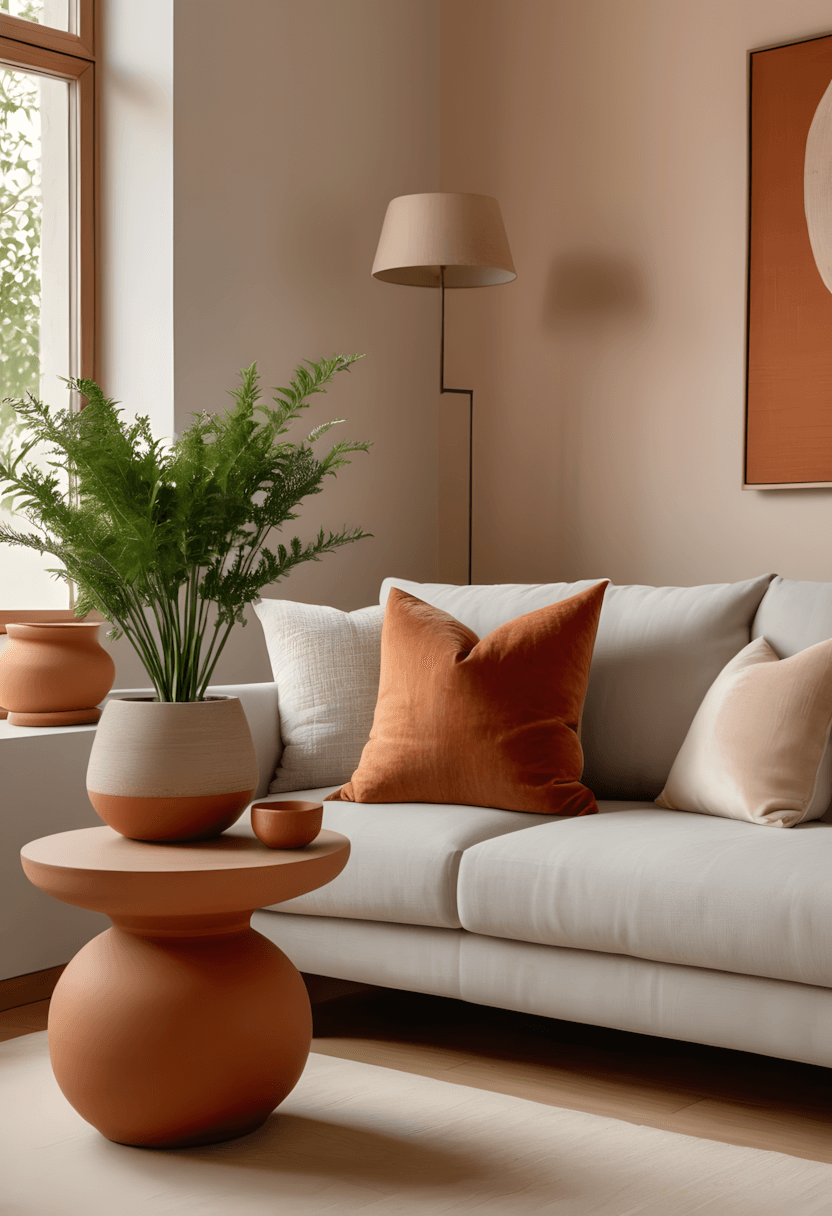
This accessory approach often appeals to homeowners wanting flexible color introduction. Terracotta throw pillows typically provide affordable color pops while offering easy seasonal updates and style flexibility.
Design consideration: Pillow groupings often create visual rhythm while varied textures and complementary colors can enhance rather than compete with existing furniture pieces.
Practical benefit: Textile accessories typically allow for frequent style updates while providing comfortable seating enhancements that serve both aesthetic and functional purposes.
4. Natural Pottery Elements
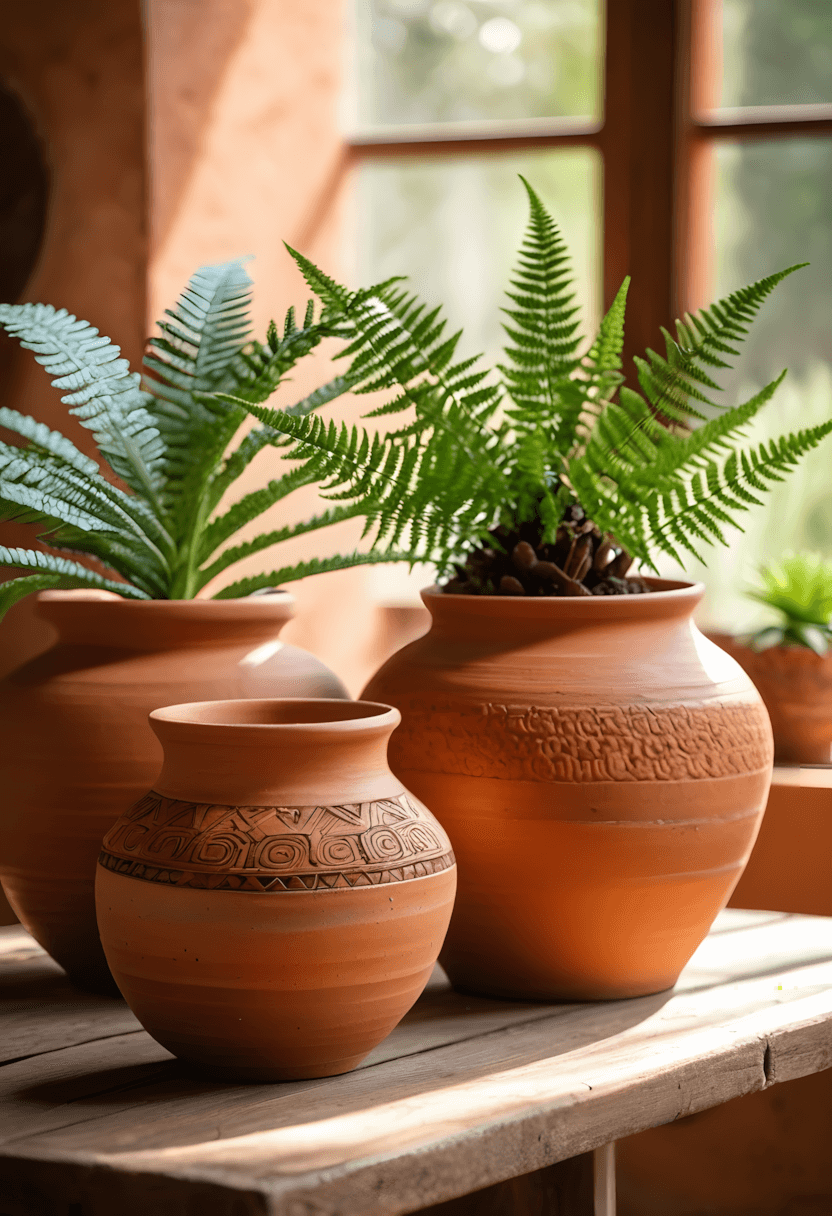
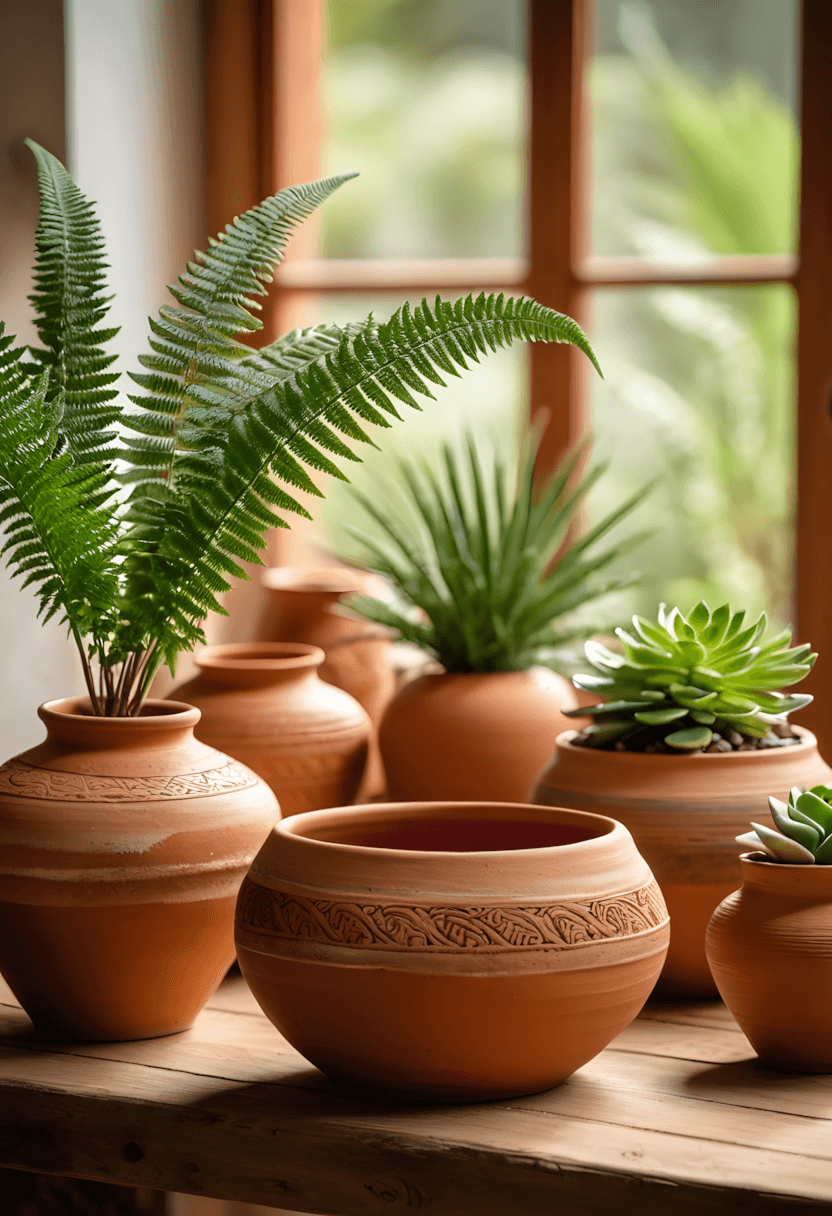
This decorative approach often appeals to those wanting authentic, organic character. Terracotta planters and vessels typically provide both functional storage and natural texture while showcasing traditional ceramic craftsmanship.
Design consideration: Clay vessels often complement various plant types while their natural finish provides textural contrast against smoother furniture surfaces and fabrics.
Practical benefit: Terracotta planters typically offer excellent drainage for plants while developing beautiful patina over time that enhances their authentic appearance.
5. Sculptural Vase Features
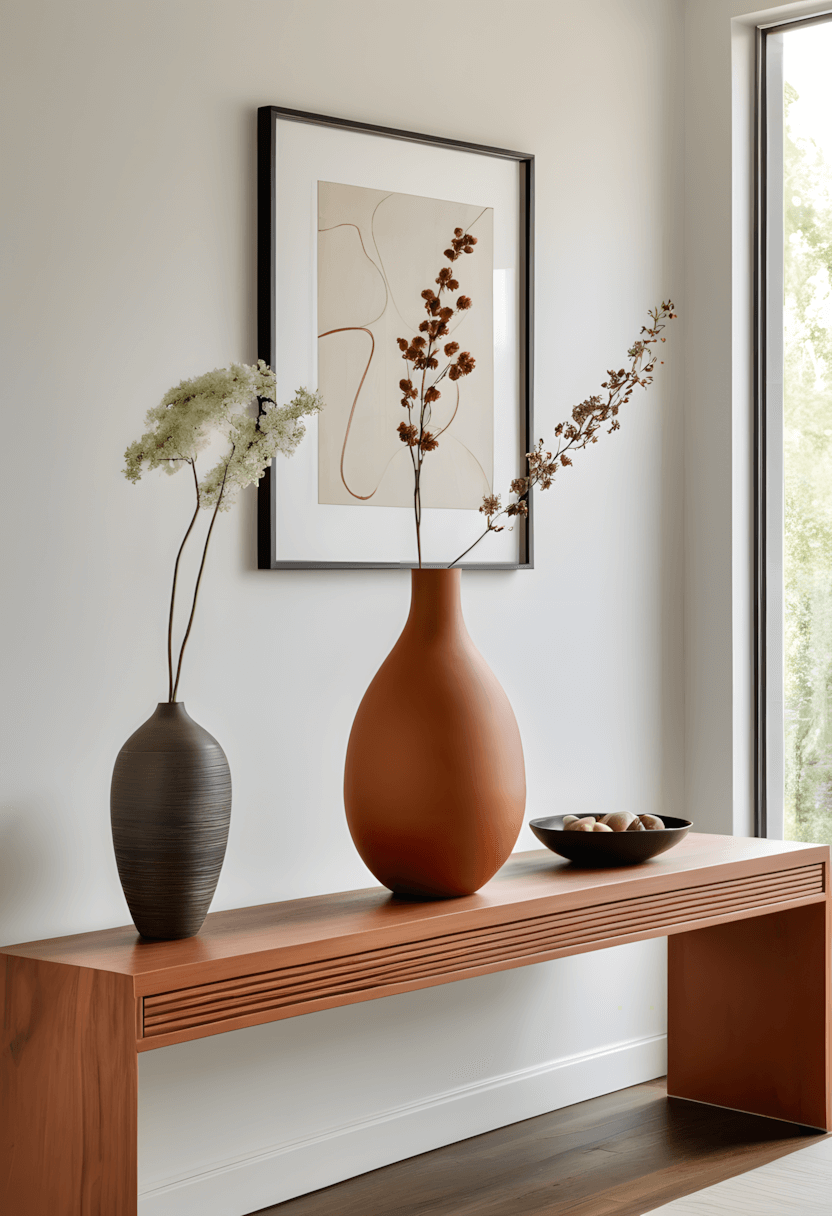
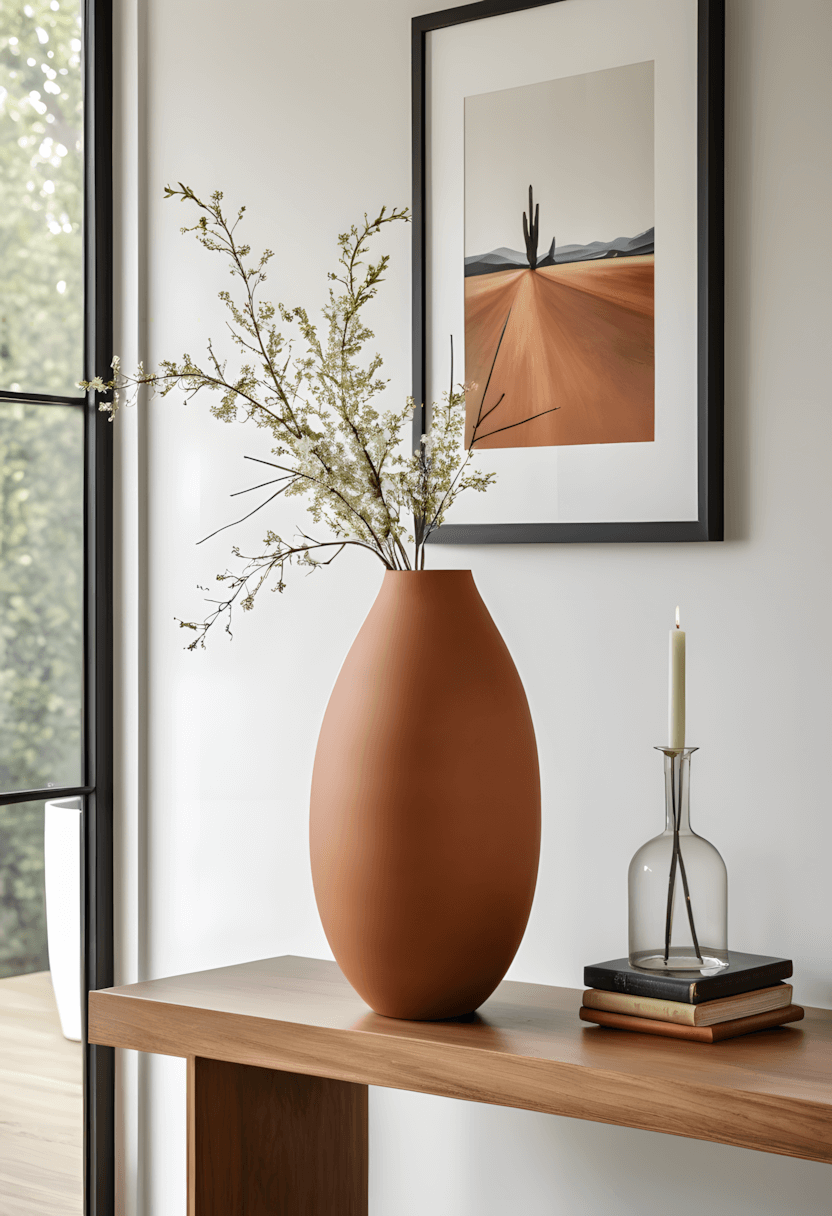
This decorative approach often appeals to homeowners seeking artistic focal points. Terracotta vases typically serve dual purposes as functional vessels and sculptural elements while adding organic shapes to structured room layouts.
Design consideration: Varied vase heights and shapes often create visual interest while natural clay textures provide appealing contrast against sleek modern furniture.
Practical benefit: Quality ceramic pieces typically offer long-term durability while providing flexibility to change floral displays or stand alone as decorative elements.
6. Ambient Lighting Accents
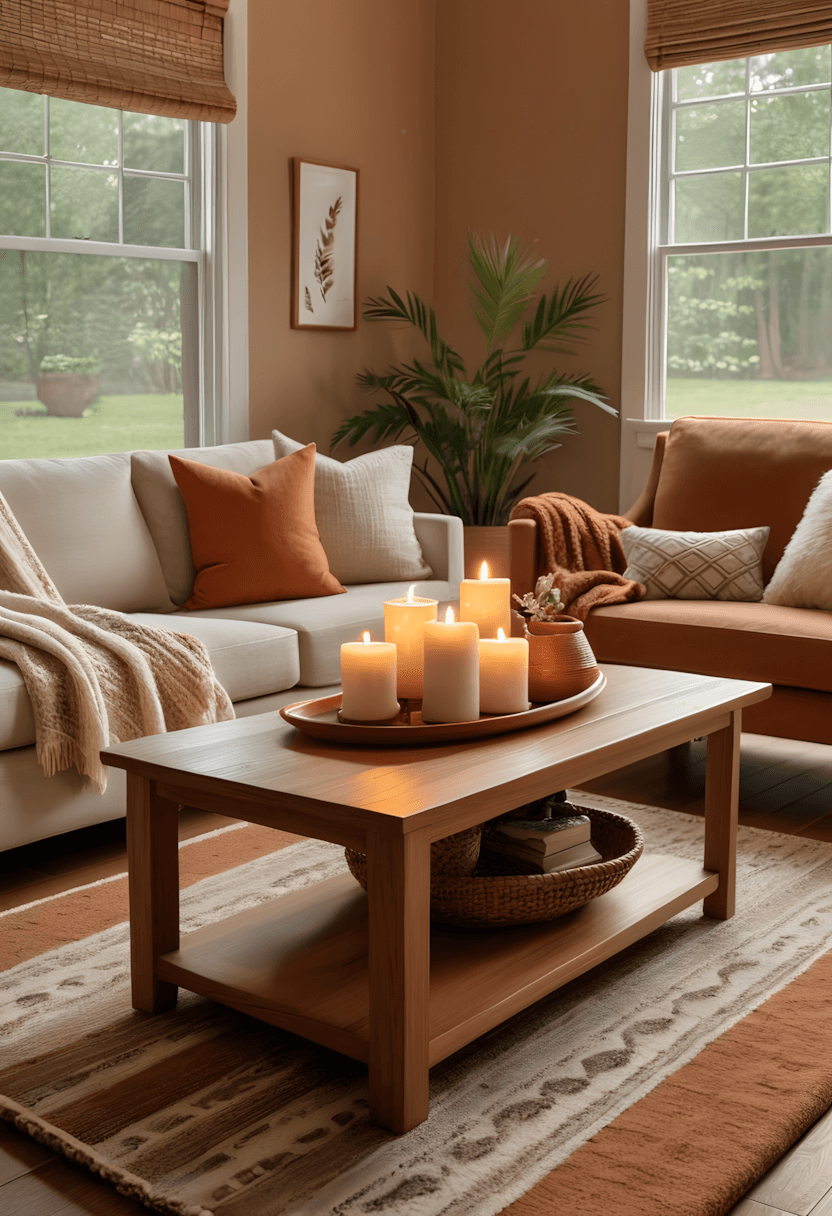
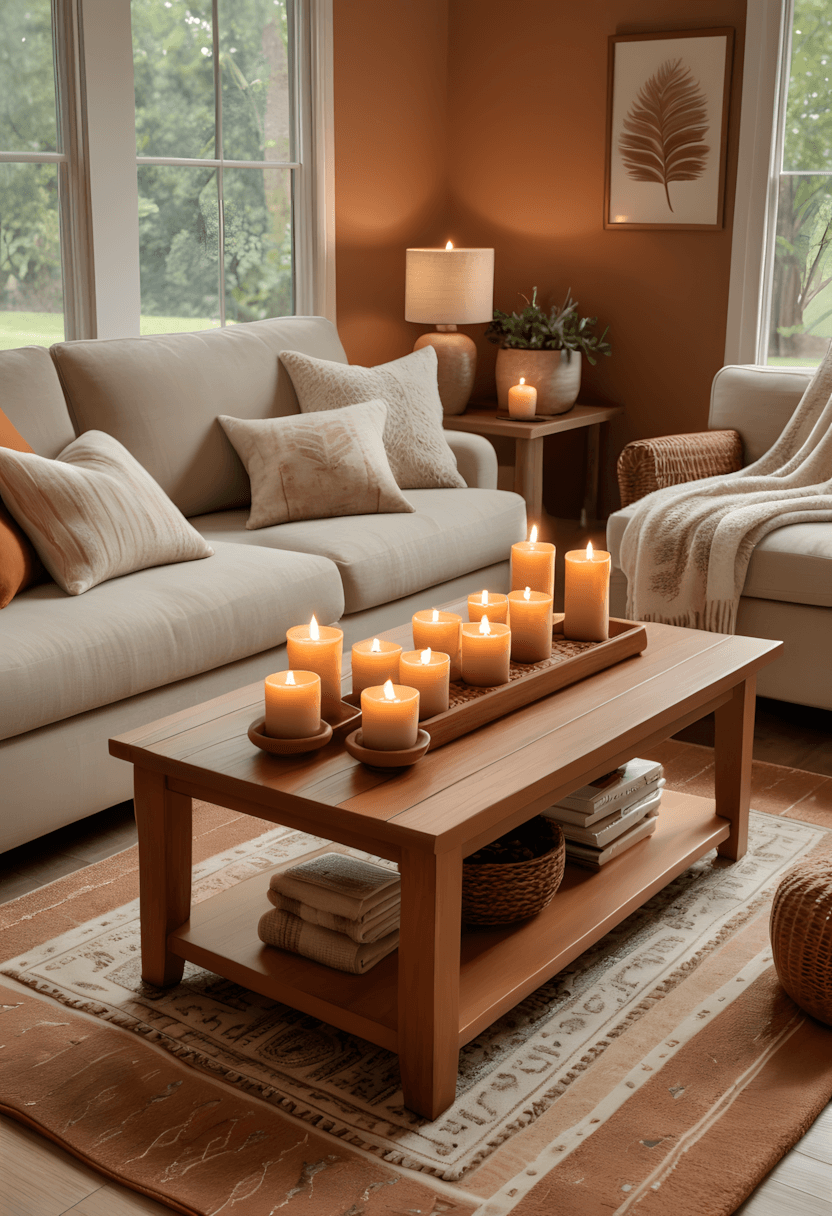
This illumination approach often appeals to those wanting warm, intimate atmosphere. Terracotta candle holders typically provide gentle lighting while adding natural texture and earthy warmth to evening environments.
Design consideration: Clay lighting elements often create interesting shadow patterns while warm candlelight naturally complements terracotta’s rich, earthy tones.
Practical benefit: Candle displays typically offer affordable ambiance while terracotta holders provide safe, attractive containers that enhance rather than hide flame light.
7. Furniture Integration Elements
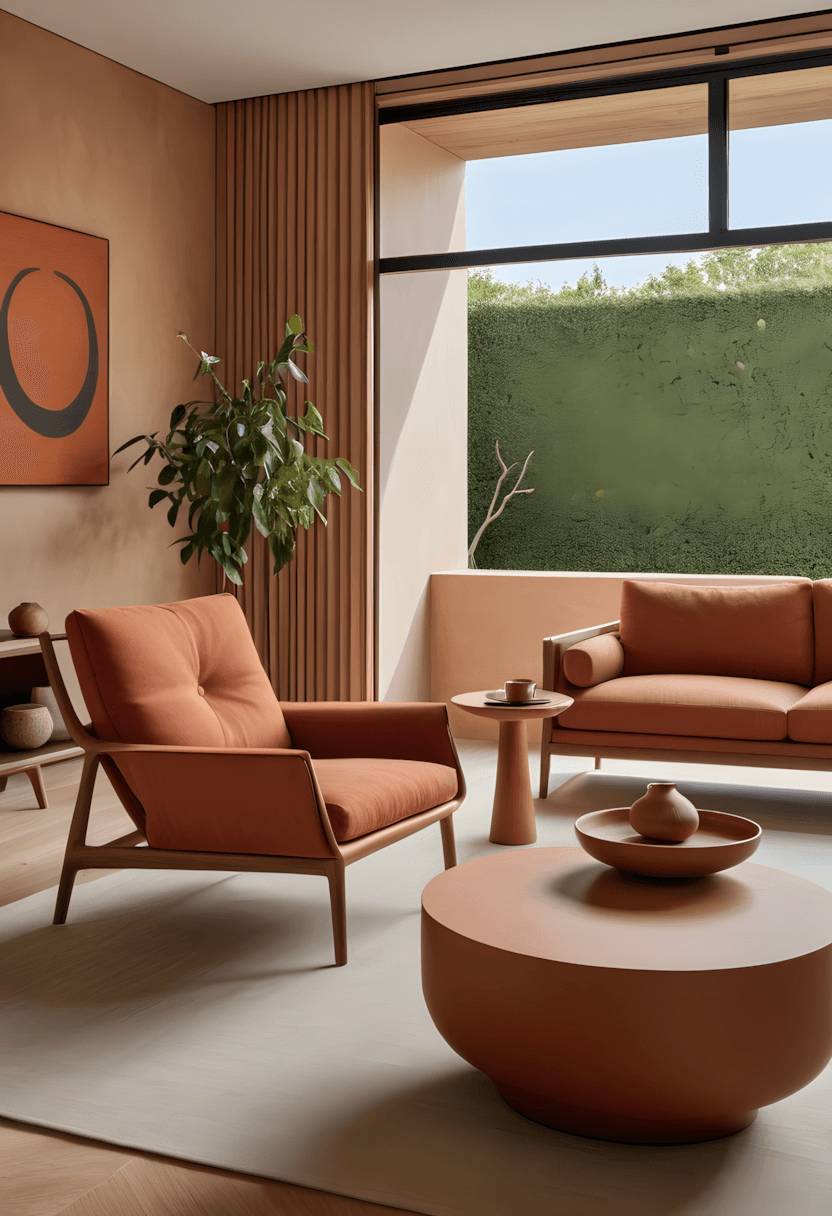
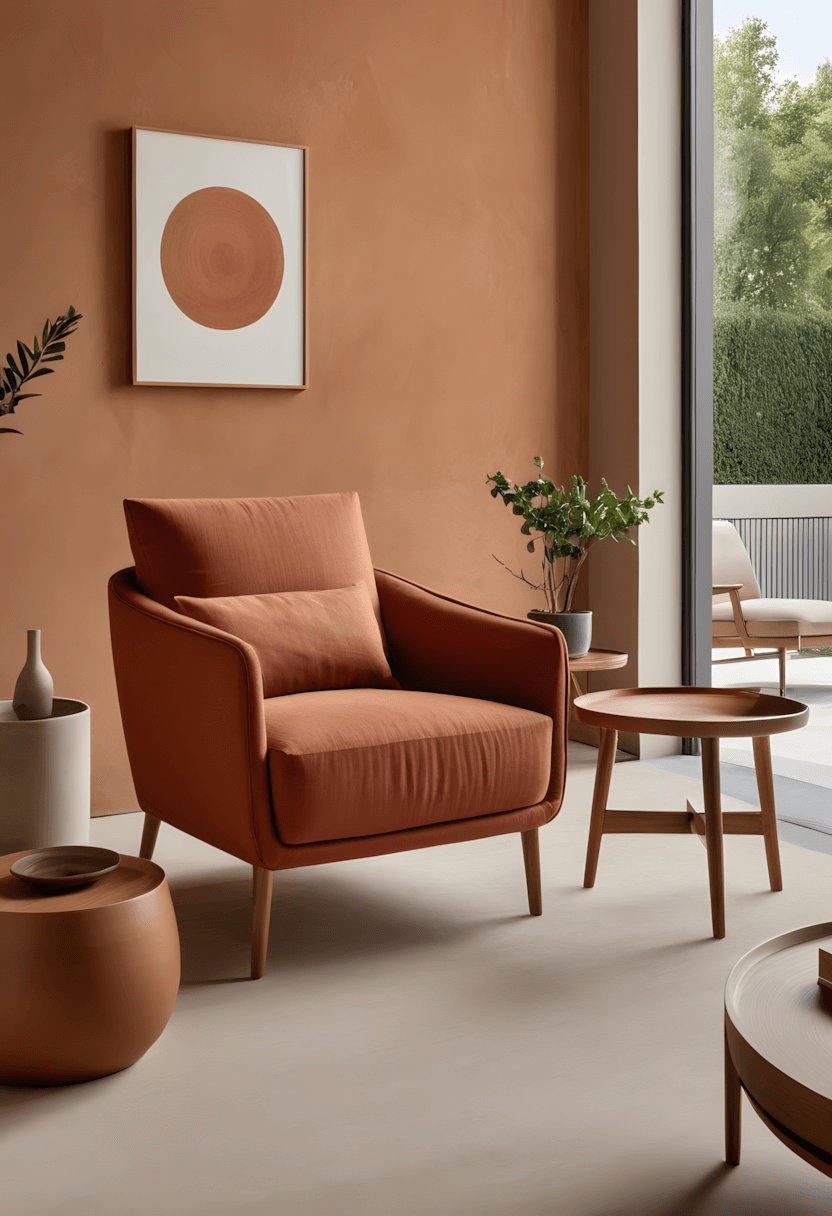
This approach often appeals to homeowners wanting substantial terracotta presence. Furniture pieces incorporating terracotta elements typically create significant visual impact while providing functional seating or storage solutions.
Design consideration: Terracotta furniture often works best when balanced with neutral surrounding pieces while rich color can anchor entire room color schemes.
Practical benefit: Quality furniture typically offers long-term value while terracotta elements provide unique character that distinguishes spaces from standard neutral schemes.
8. Flooring and Surface Applications
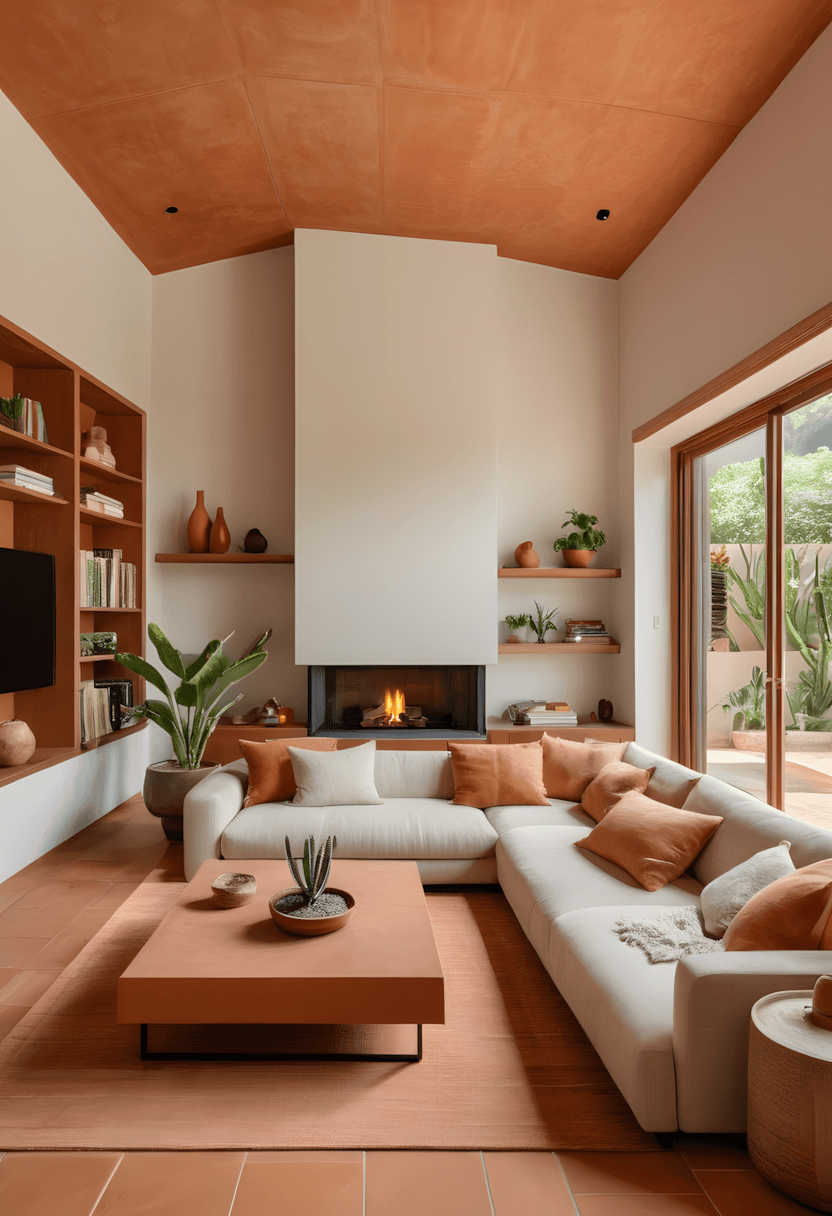
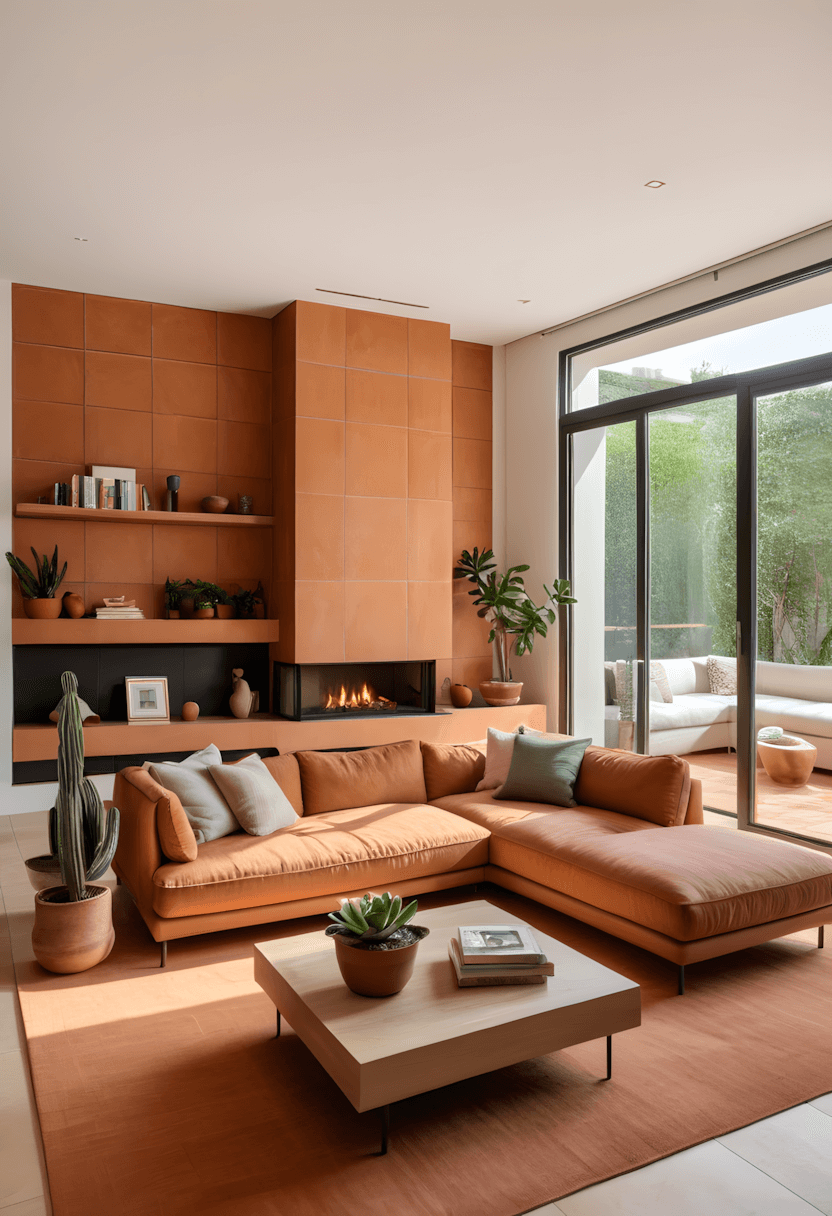
This structural approach often appeals to those wanting permanent terracotta integration. Tile installations typically provide durable surfaces while adding Mediterranean or rustic character to contemporary living spaces.
Design consideration: Terracotta tiles often complement various architectural styles while natural material variations create visual interest that prevents uniformity.
Practical benefit: Clay tiles typically offer excellent durability while providing natural cooling properties and easy maintenance for high-traffic living areas.
9. Artistic Wall Treatments
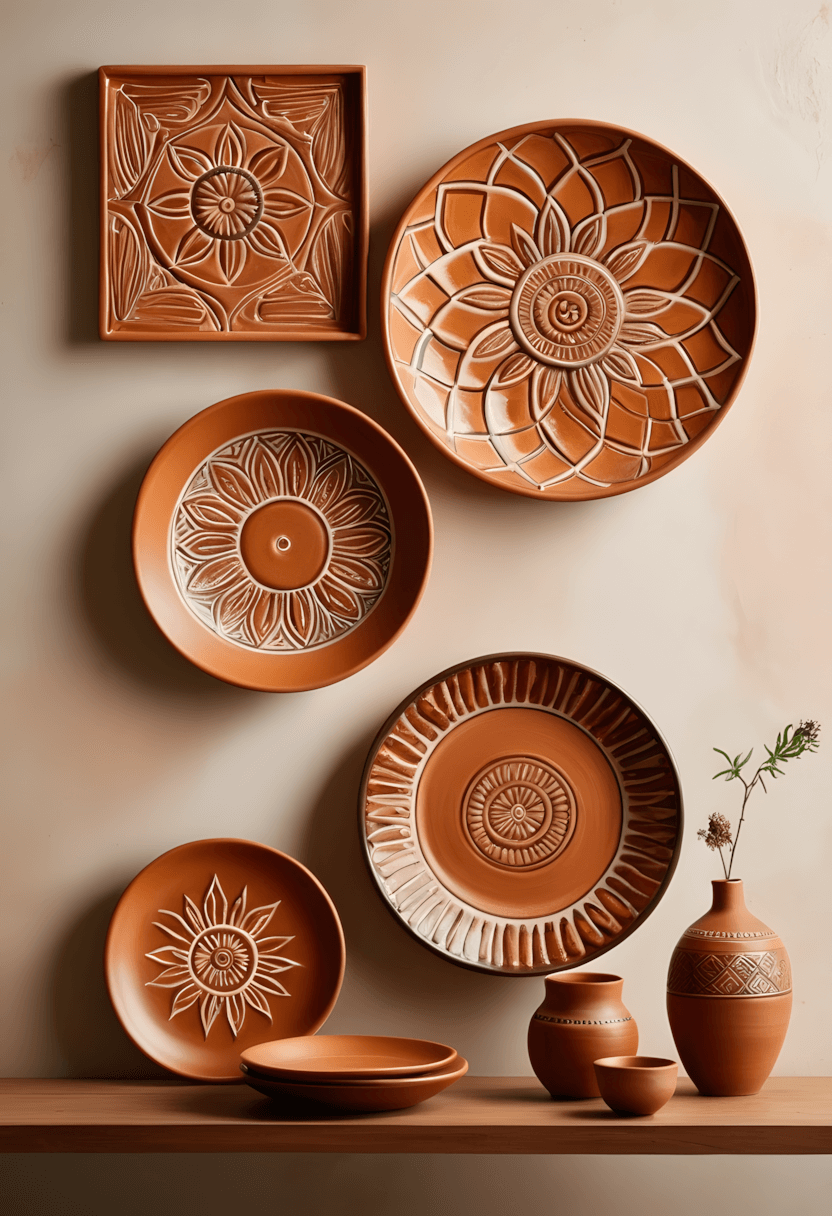
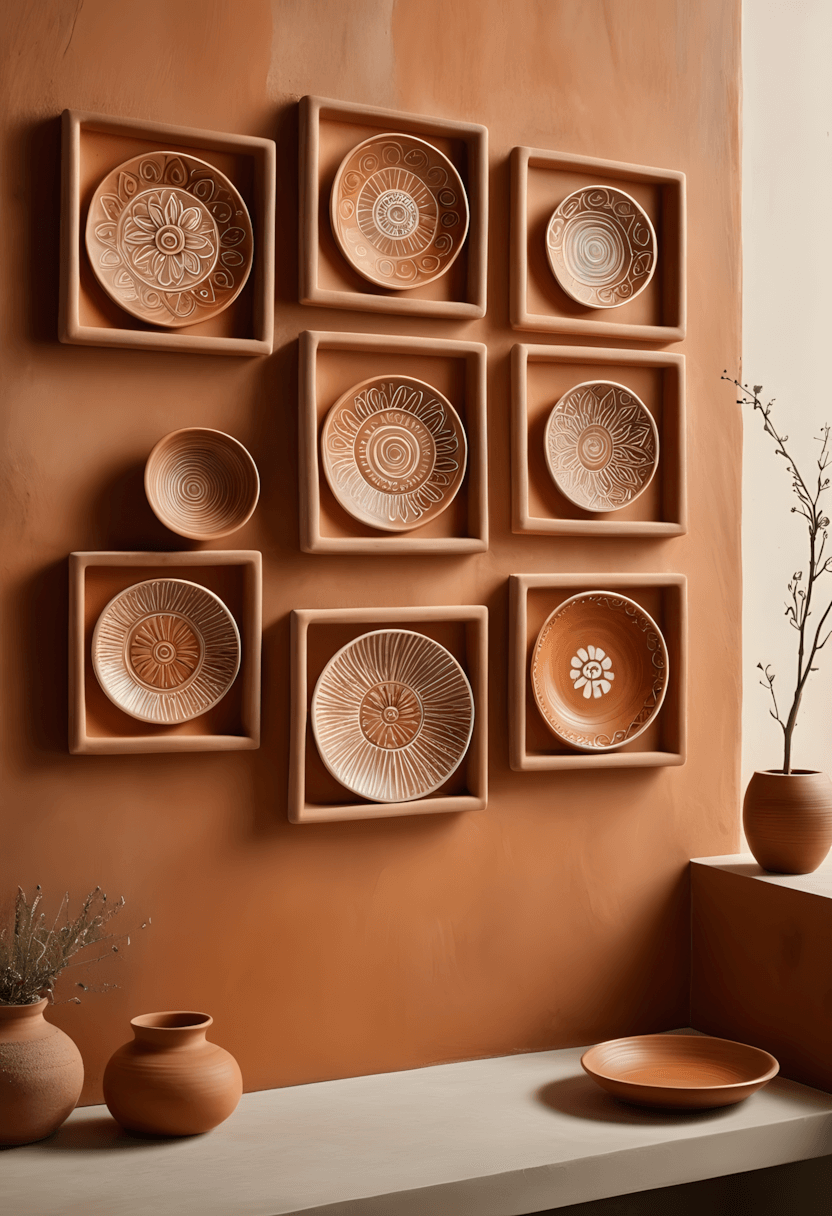
This decorative approach often appeals to homeowners wanting unique, handcrafted character. Terracotta artwork and wall hangings typically provide focal points while showcasing ceramic artistry and cultural traditions.
Design consideration: Clay wall art often adds textural dimension while earthy tones complement rather than compete with other natural materials throughout the space.
Practical benefit: Ceramic art pieces typically offer lasting beauty while supporting artisan craftsmanship and providing conversation pieces that enhance personal style.
10. Custom Lighting Solutions
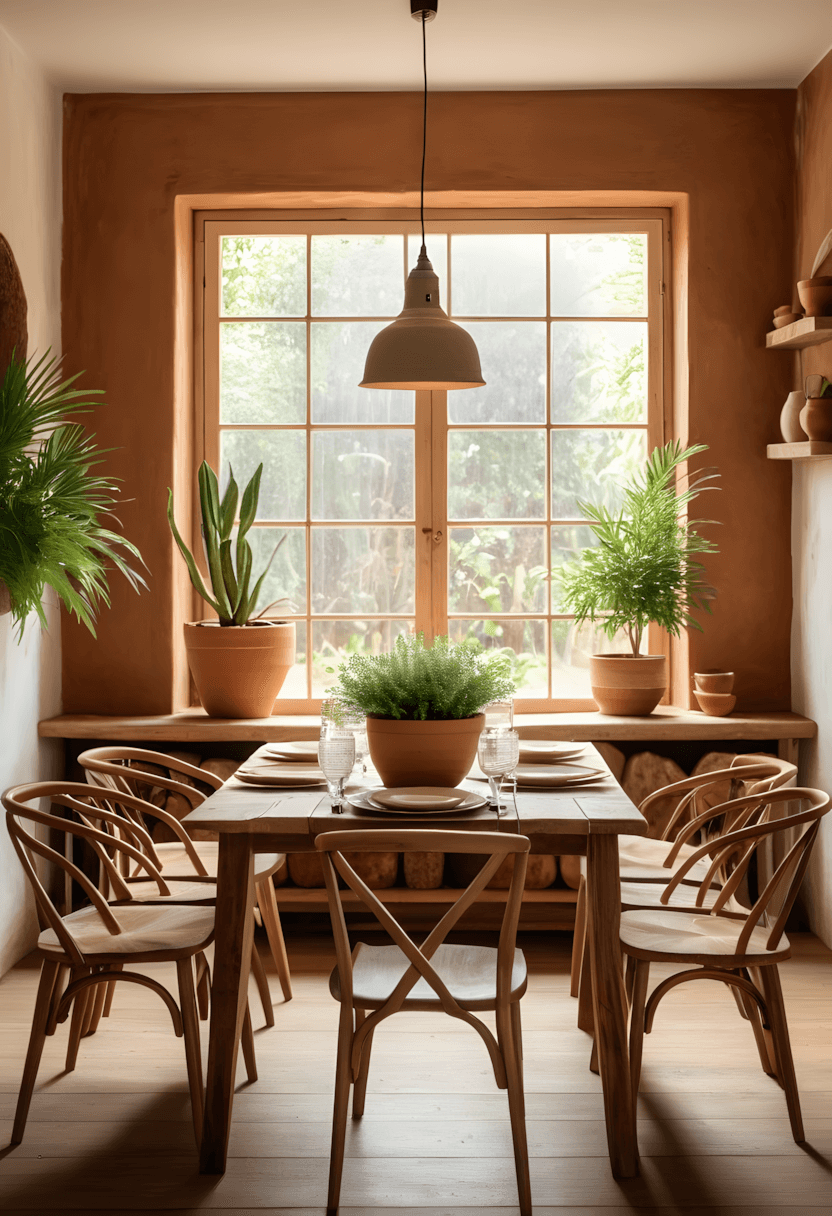
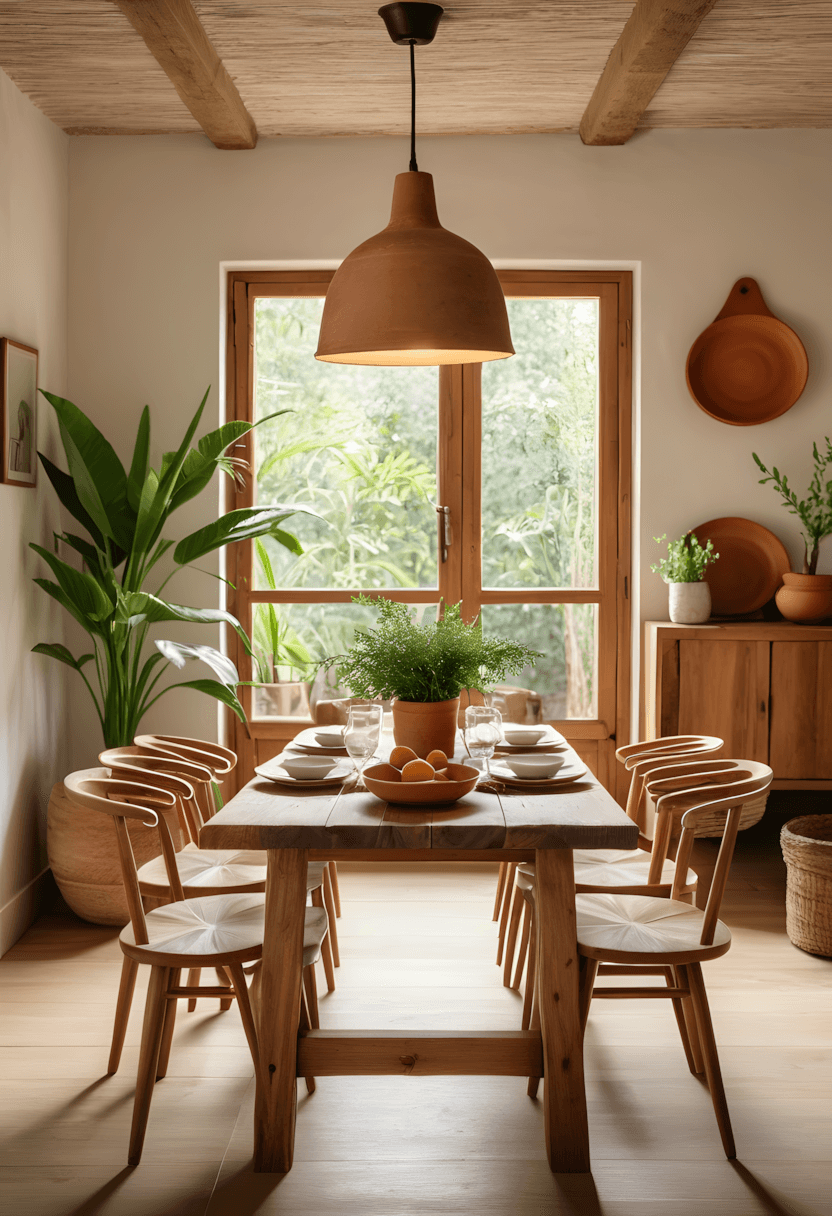
This illumination approach often appeals to those seeking both function and style. Terracotta light fixtures typically provide warm, diffused lighting while serving as decorative elements that enhance room atmosphere.
Design consideration: Clay lighting often creates soft, natural illumination while organic shapes and textures complement various interior design styles from rustic to contemporary.
Practical benefit: Ceramic fixtures typically offer durability while their porous nature naturally diffuses light to create comfortable, non-glaring illumination patterns.
11. Textile Comfort Layers
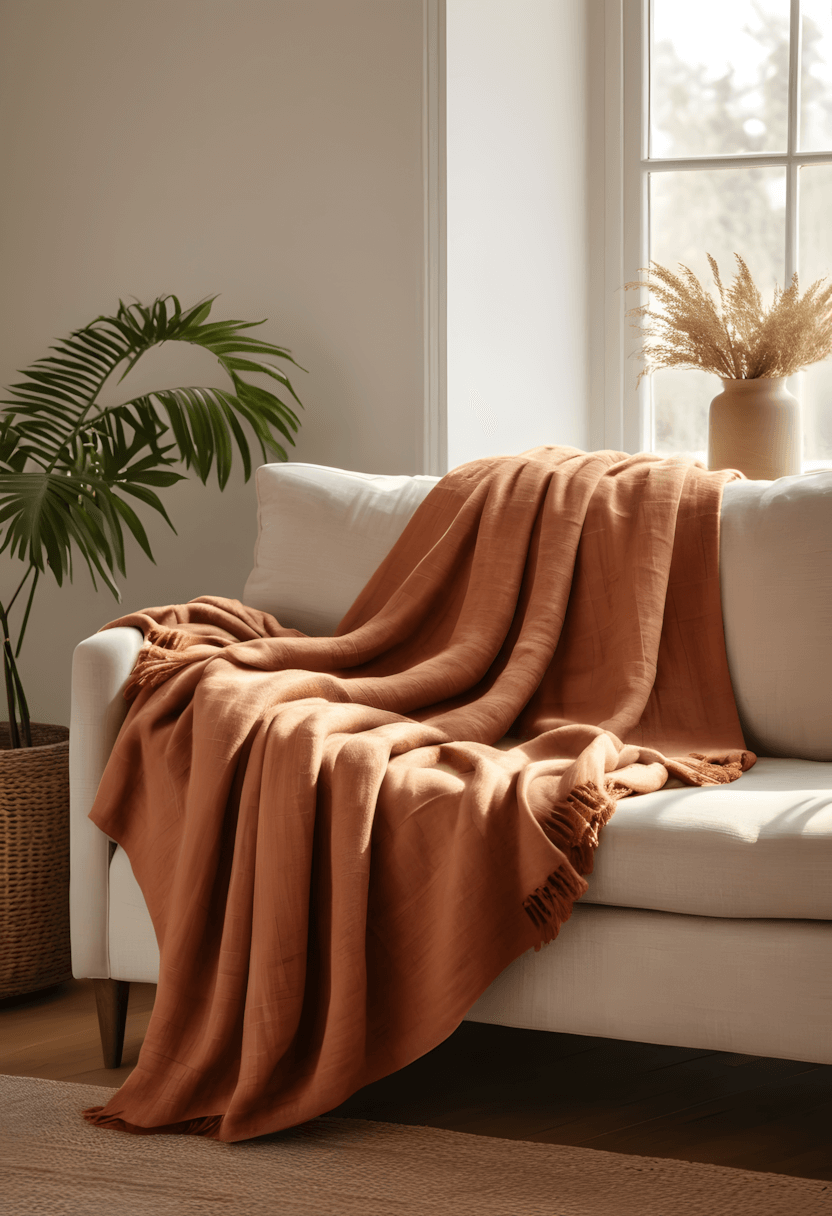
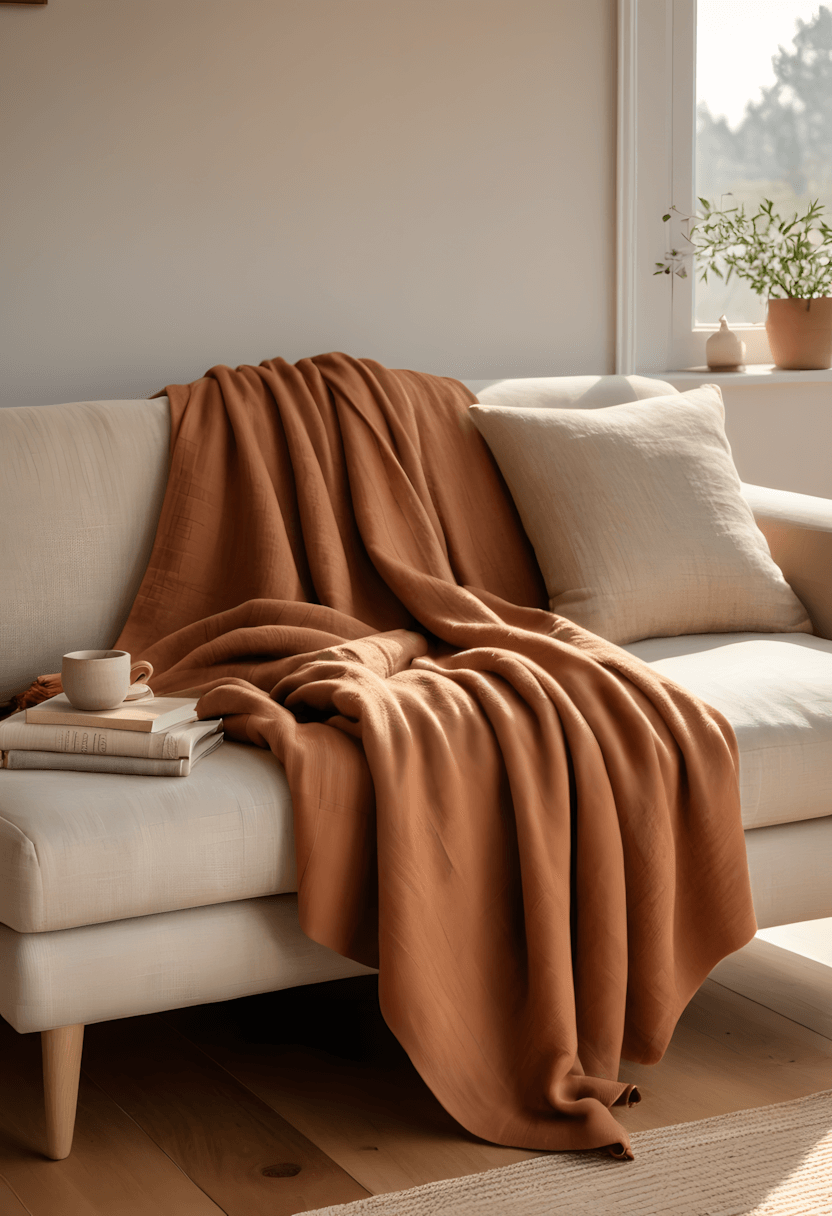
This comfort approach often appeals to homeowners prioritizing both style and coziness. Terracotta throws and blankets typically provide warmth and color while adding necessary softness to structured furniture pieces.
Design consideration: Textured fabrics often enhance visual depth while terracotta tones can coordinate with various neutral furniture colors and natural wood finishes.
Practical benefit: Quality throws typically provide practical warmth while offering affordable ways to introduce significant color that can be easily changed seasonally.
12. Window Treatment Accents
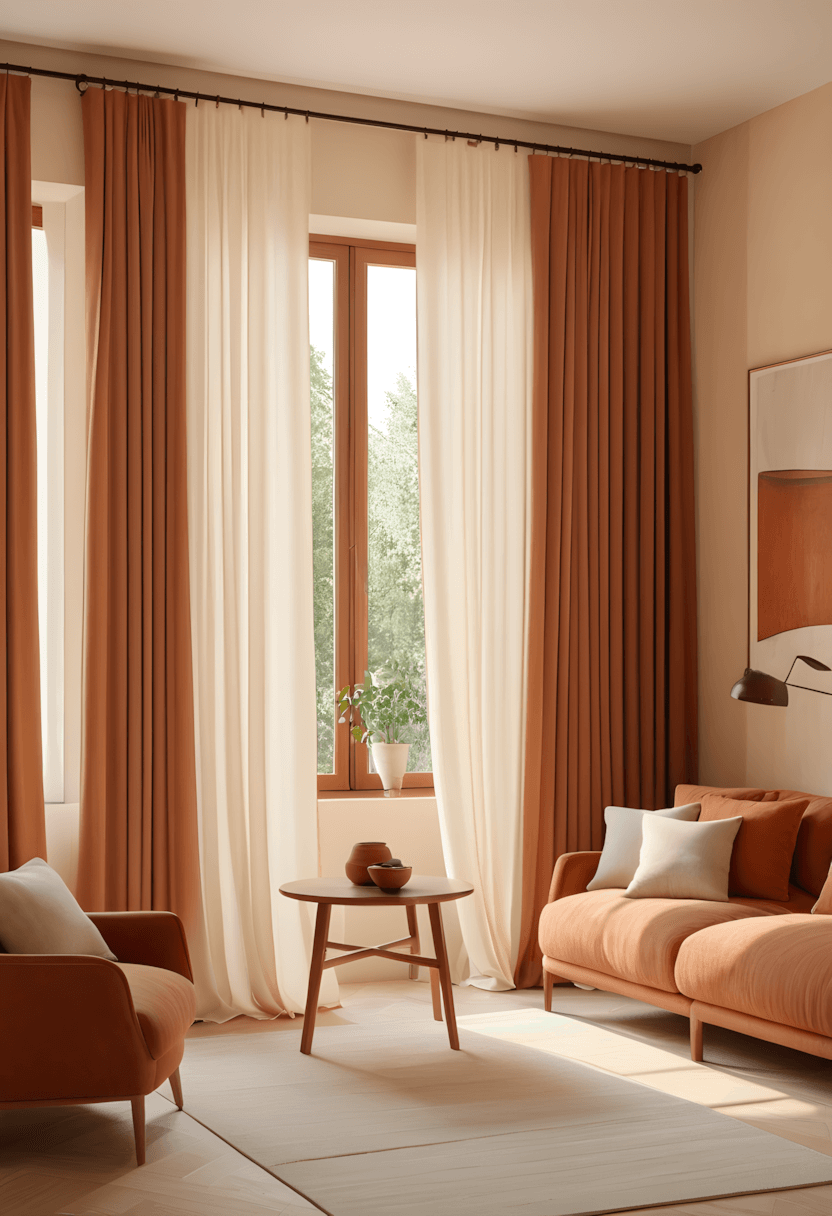
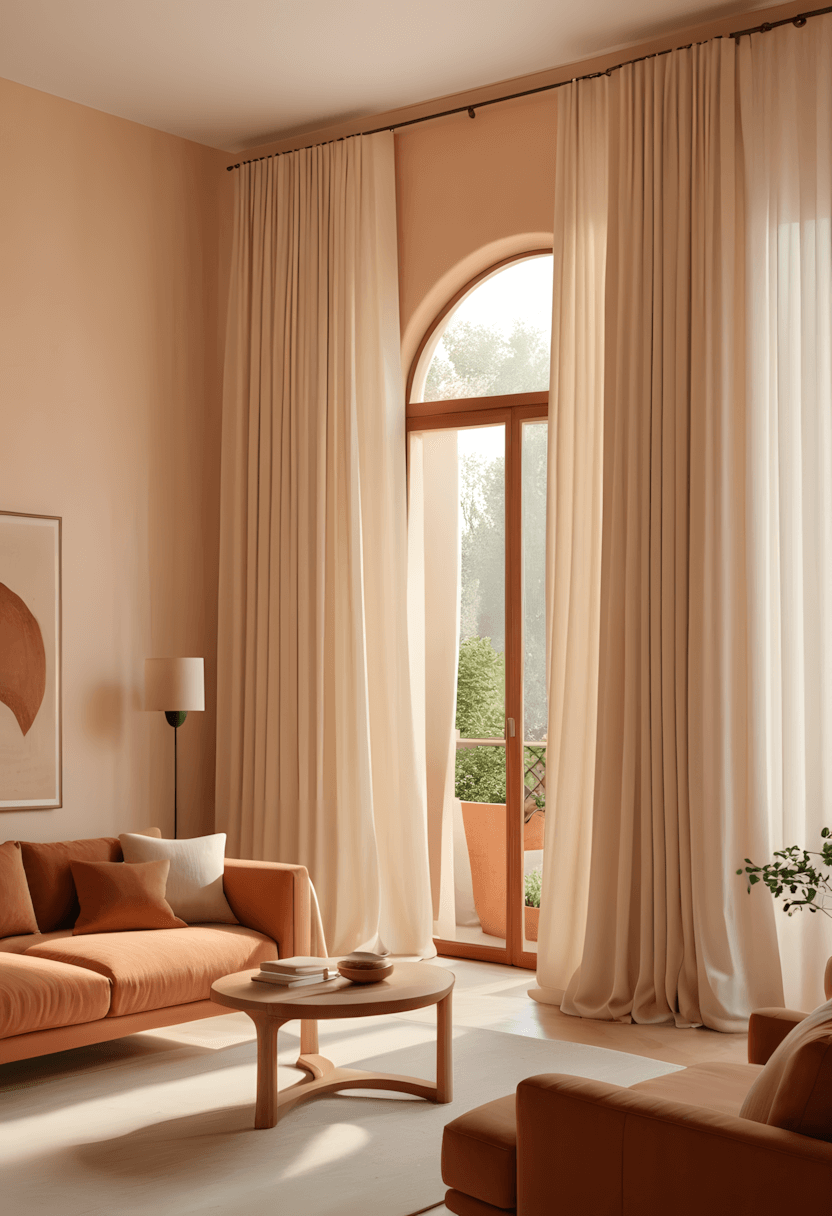
This architectural approach often appeals to those wanting subtle color integration. Terracotta curtain hardware typically adds warm metallic tones while providing functional window treatment support with decorative appeal.
Design consideration: Hardware finishes often coordinate with other room metals while warm tones can tie together various design elements throughout the living space.
Practical benefit: Quality hardware typically offers long-term durability while terracotta finishes provide unique alternatives to standard bronze or brass options.
13. Central Table Features
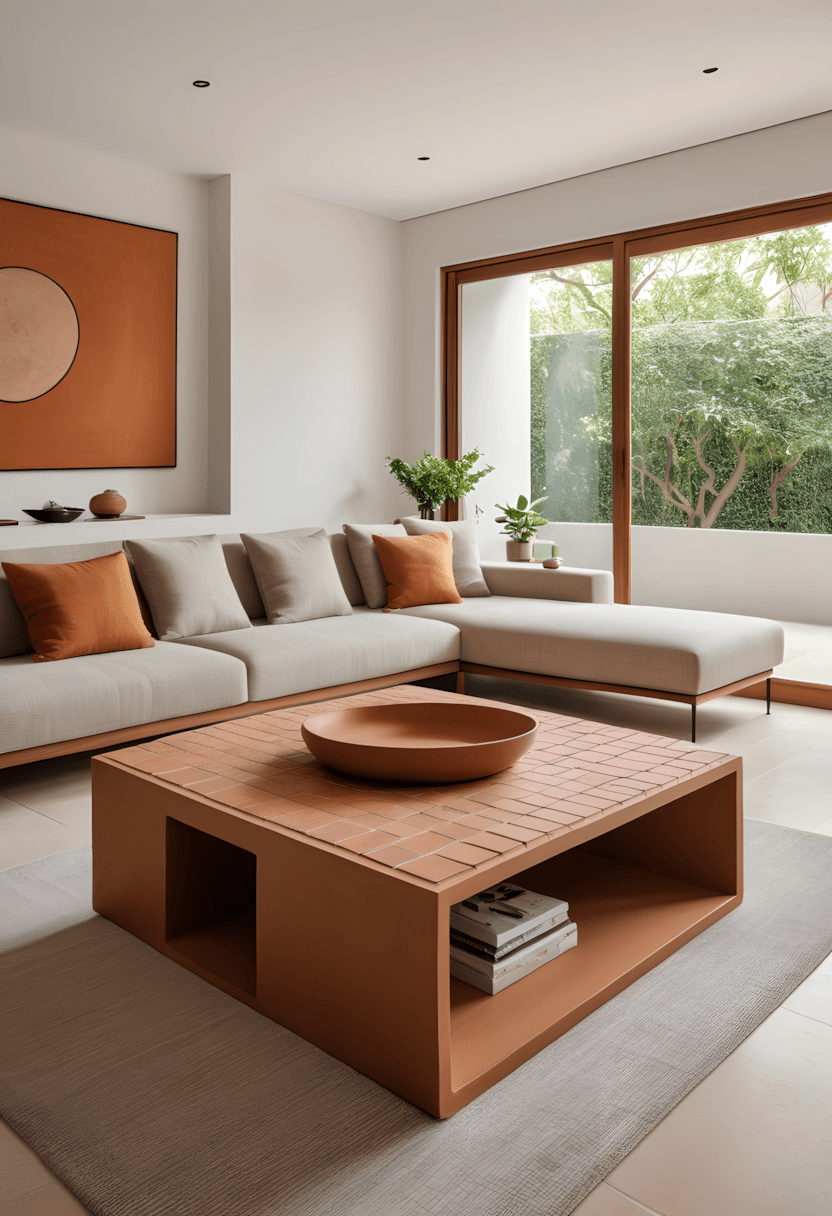
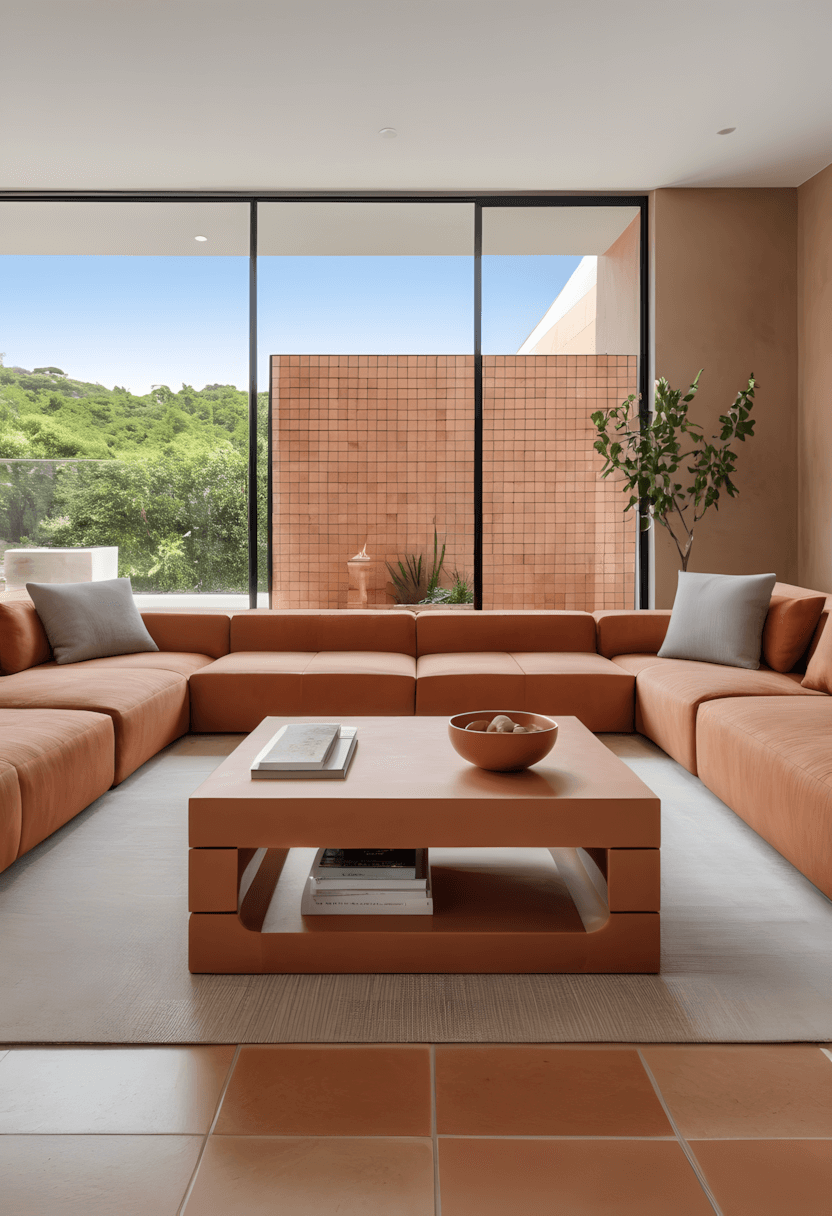
This furniture approach often appeals to homeowners wanting distinctive centerpiece elements. Terracotta coffee tables typically provide unique focal points while offering practical surface space for daily living activities.
Design consideration: Natural clay surfaces often complement various decorative objects while organic textures provide appealing contrast against sleek modern accessories.
Practical benefit: Ceramic table surfaces typically resist water damage while developing beautiful patina that enhances rather than detracts from their appearance over time.
14. Reflective Surface Elements
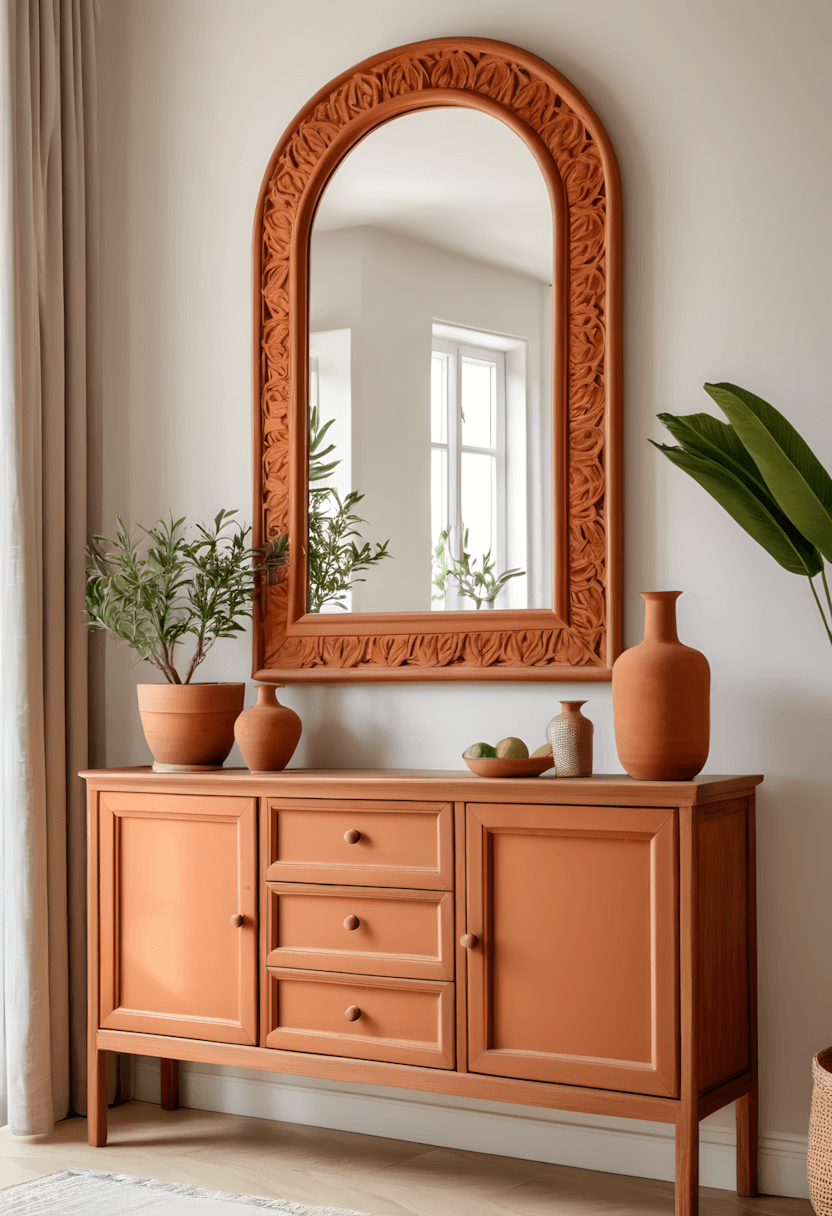
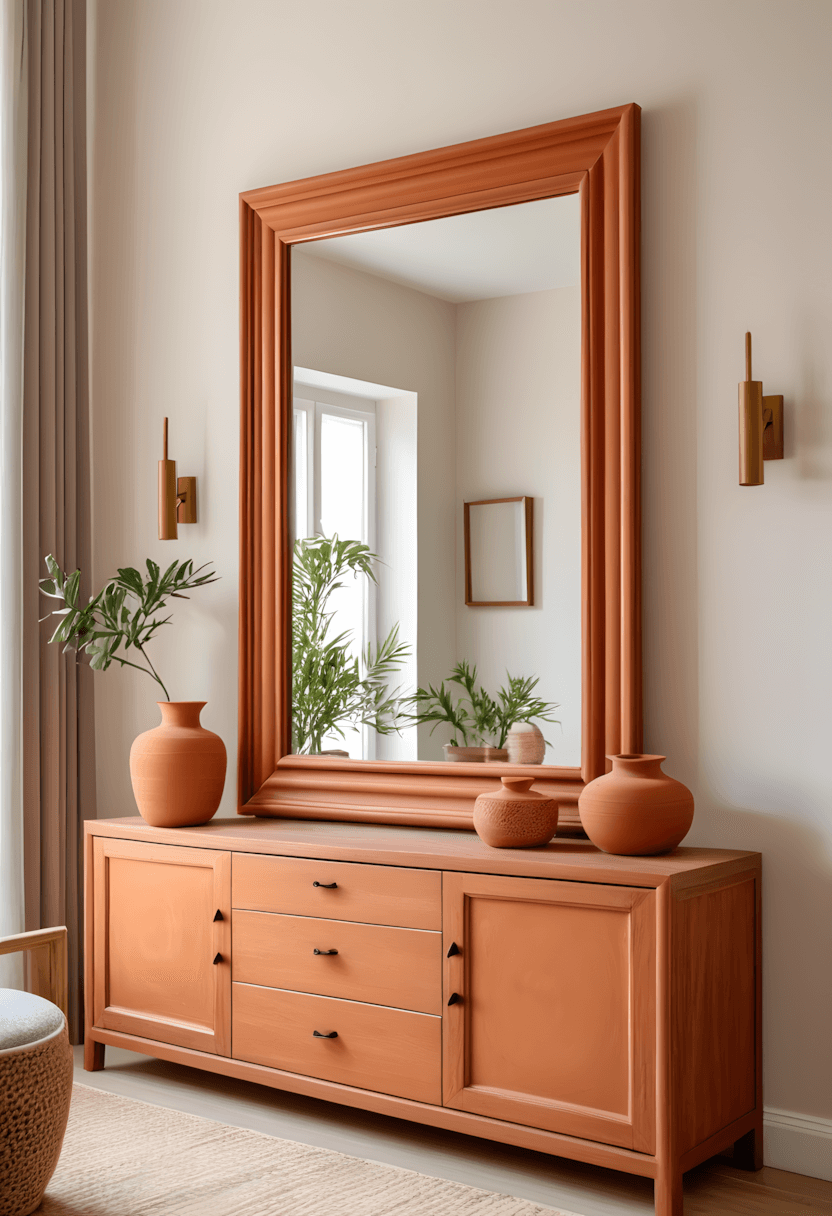
This decorative approach often appeals to those wanting both function and style enhancement. Terracotta-framed mirrors typically combine practical reflection with warm color introduction while adding architectural interest to wall compositions.
Design consideration: Mirror frames often provide opportunities for color coordination while reflective surfaces help distribute natural light throughout terracotta-accented spaces.
Practical benefit: Framed mirrors typically offer dual functionality while terracotta elements provide unique character that distinguishes them from standard mirror options.
15. Small Accessory Integration
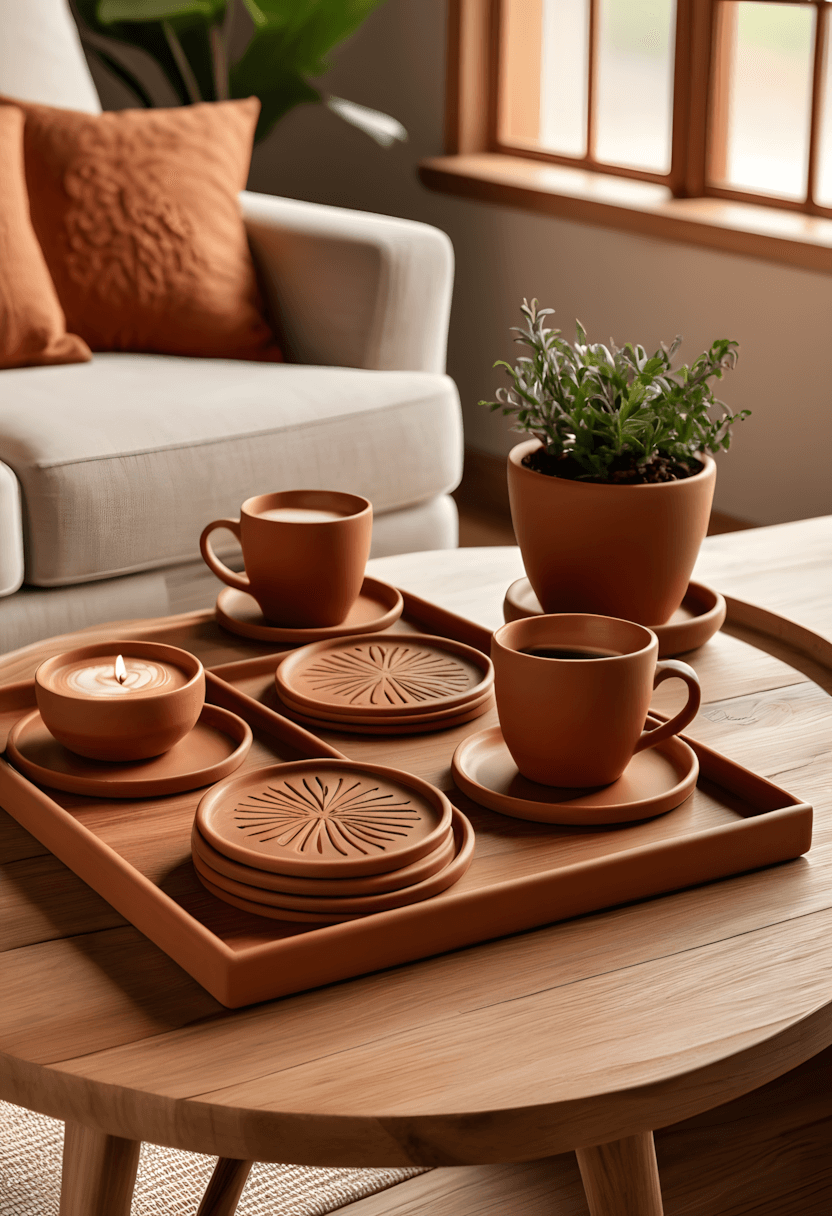
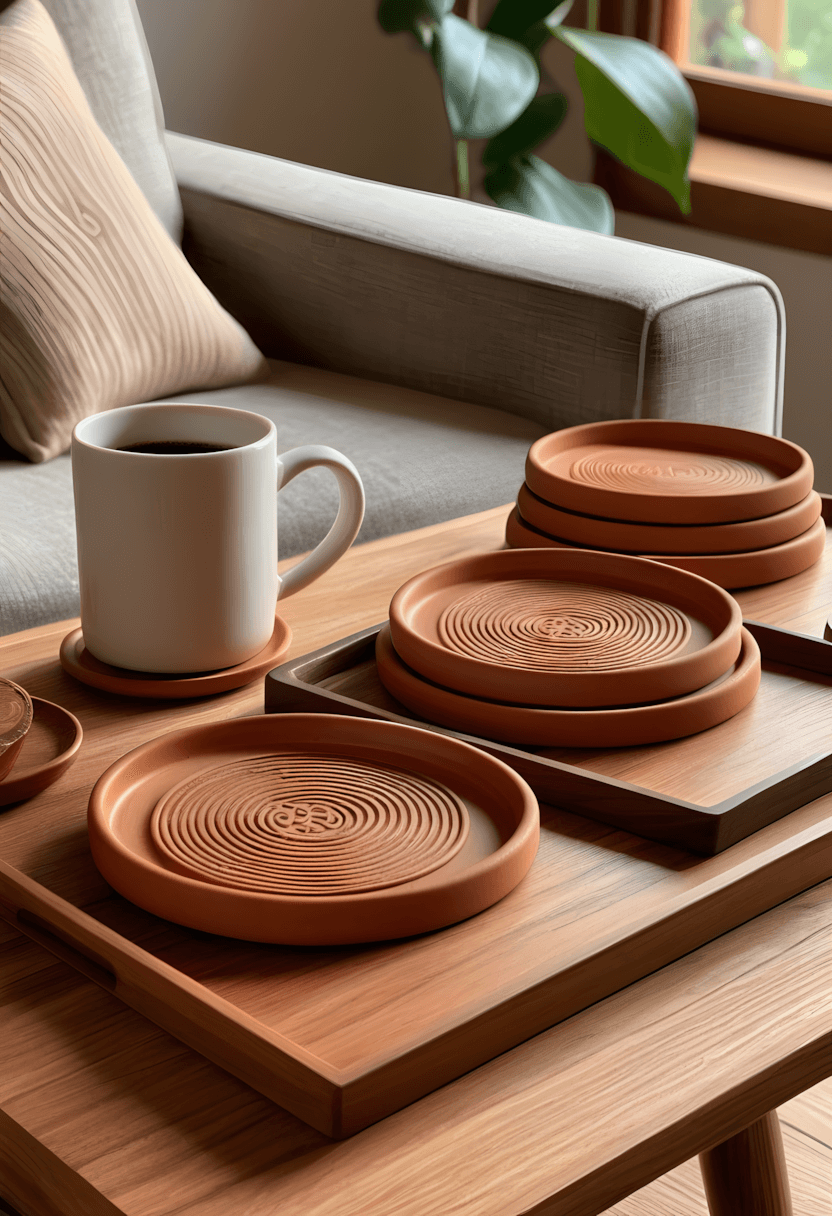
This subtle approach often appeals to homeowners preferring gradual color introduction. Terracotta coasters, trays, and small vessels typically provide gentle color accents while serving practical daily functions.
Design consideration: Small accessories often allow for color experimentation while handcrafted pieces can introduce authentic textures without overwhelming existing design schemes.
Practical benefit: Functional accessories typically serve daily needs while providing affordable opportunities to test color preferences before larger design commitments.
16. Architectural Feature Enhancement
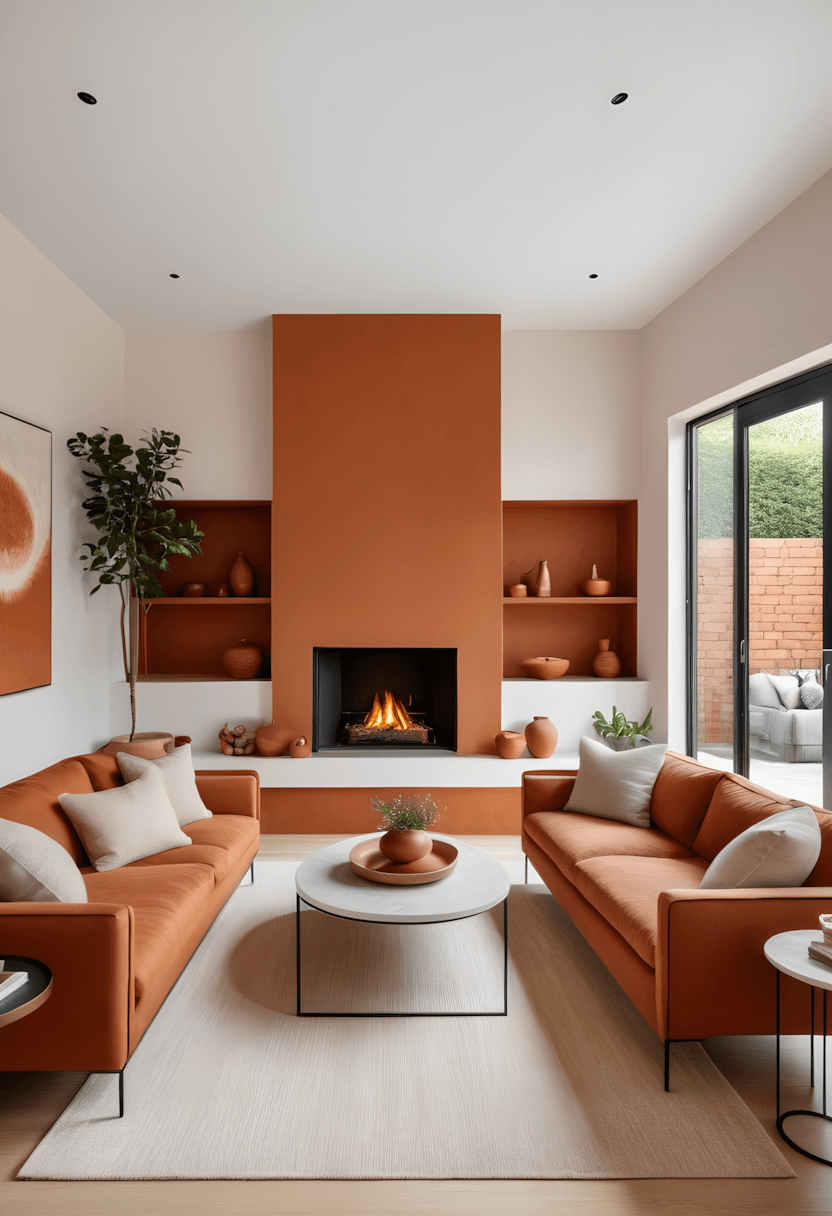
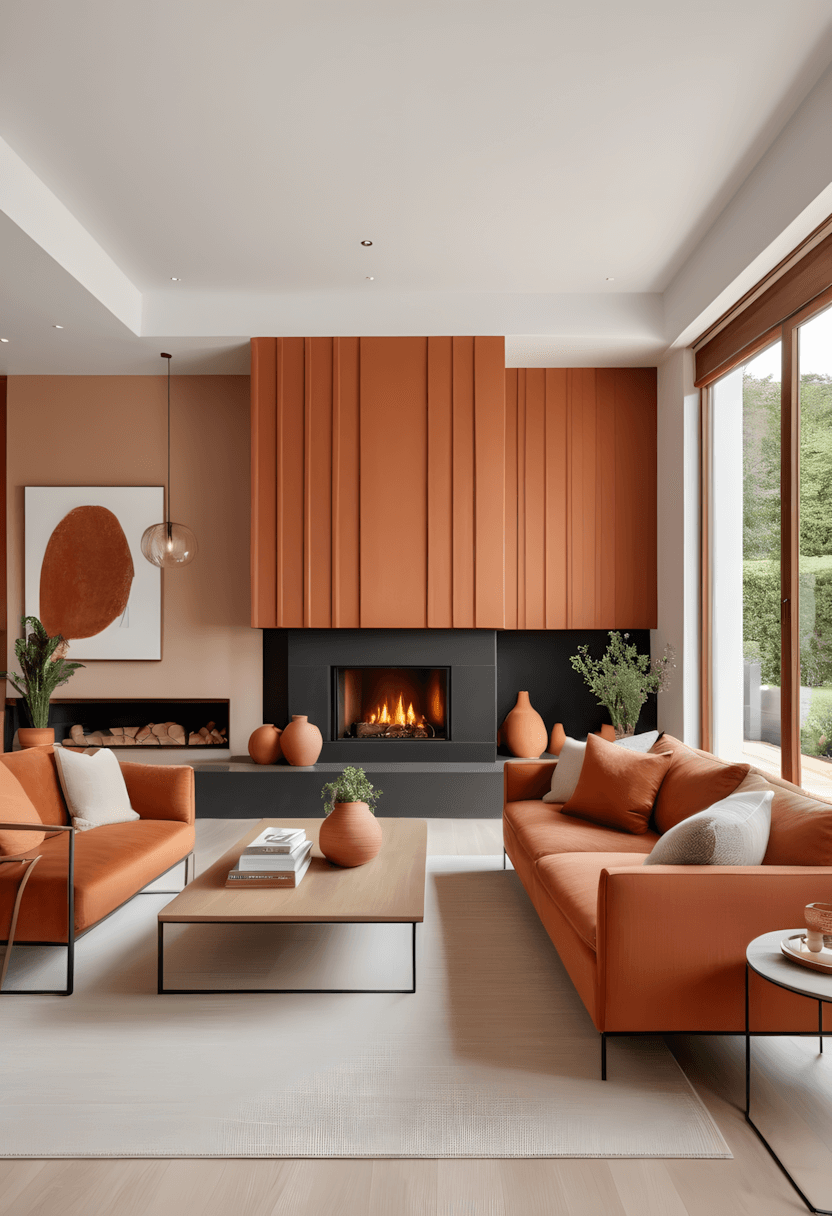
This structural approach often appeals to those wanting permanent design impact. Terracotta cladding on fireplaces or feature walls typically creates dramatic focal points while adding Mediterranean or contemporary character.
Design consideration: Architectural cladding often enhances existing features while natural material variations provide visual interest that complements rather than competes with furnishings.
Practical benefit: Permanent installations typically add property value while terracotta’s fire-resistant properties make it particularly suitable for fireplace applications.
17. Textured Wall Covering
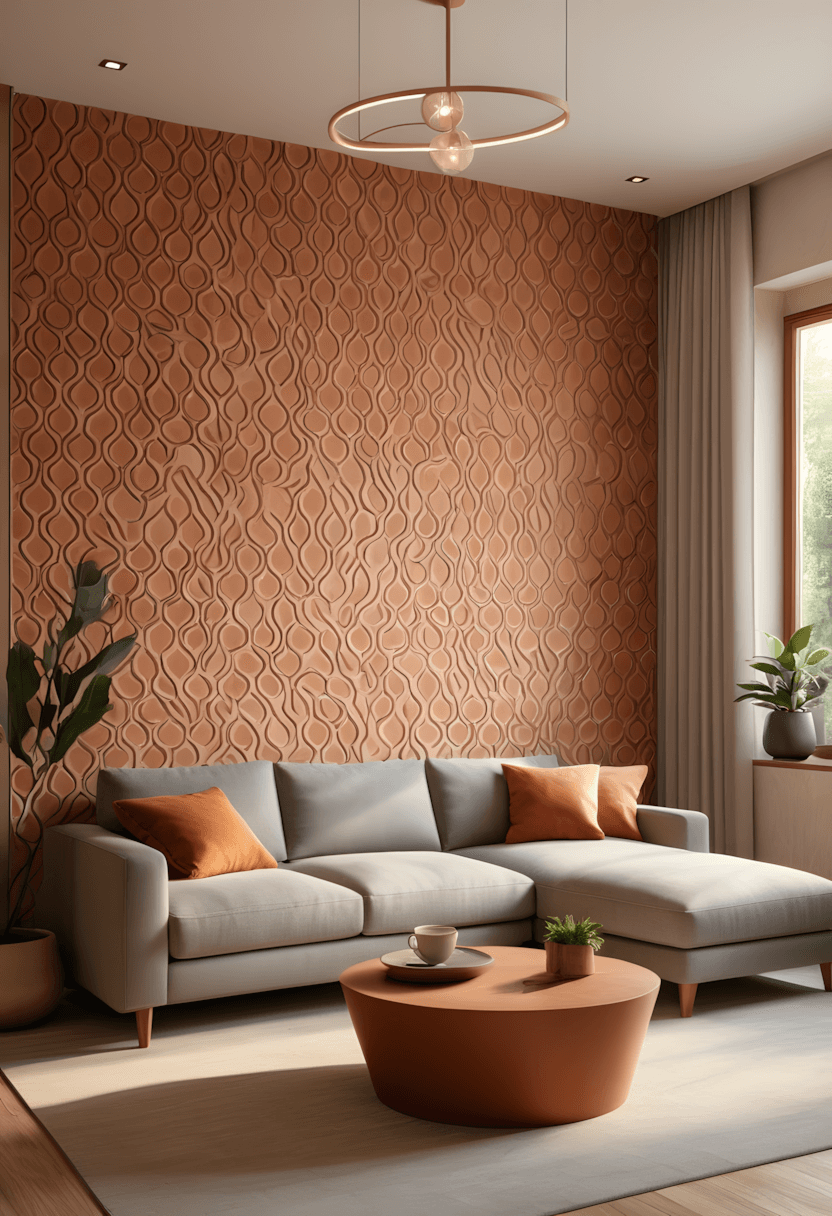
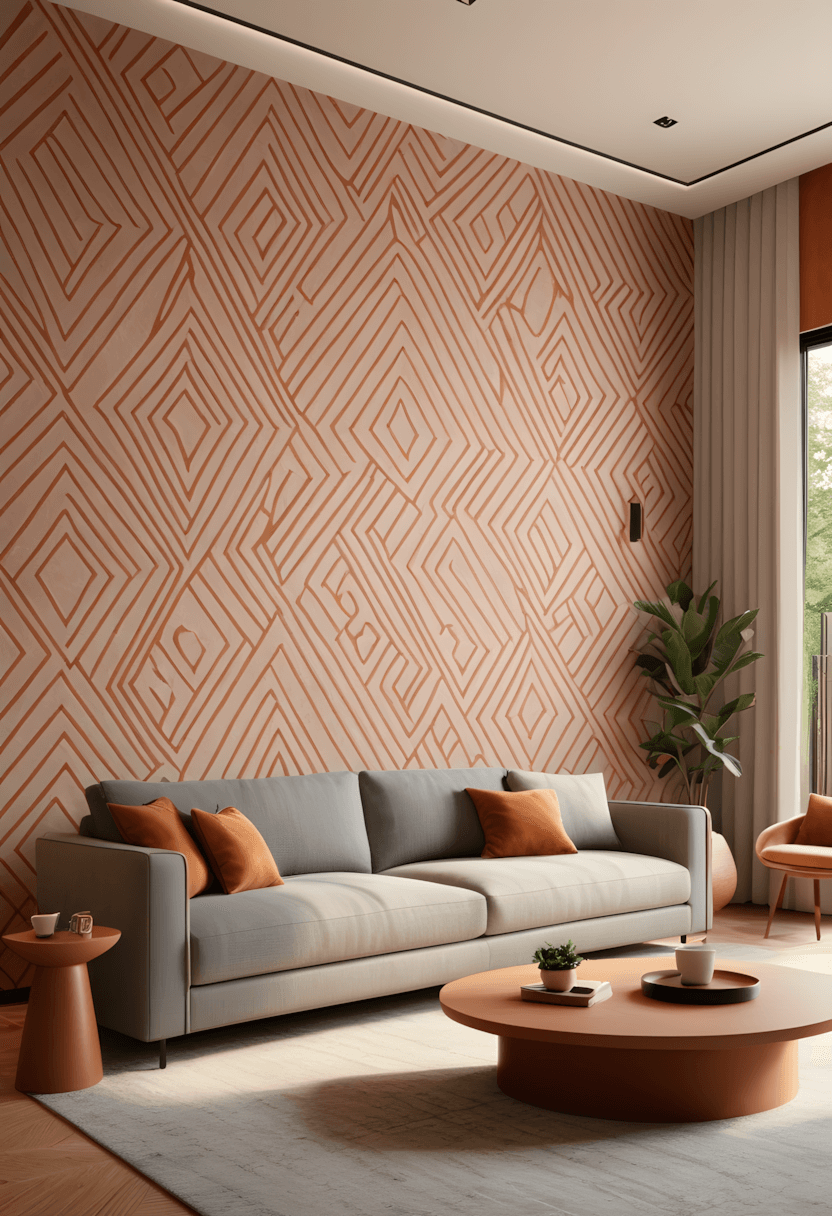
This surface treatment often appeals to homeowners wanting sophisticated pattern introduction. Terracotta-toned textured wallpapers typically provide visual depth while maintaining the warm, earthy palette characteristic of this color family.
Design consideration: Textured wallpapers often create focal walls while subtle patterns can add visual interest without overwhelming smaller living room spaces.
Practical benefit: Quality wallpapers typically offer easier installation than paint techniques while providing professional-looking results that enhance overall room sophistication.
18. Upholstery and Fabric Integration
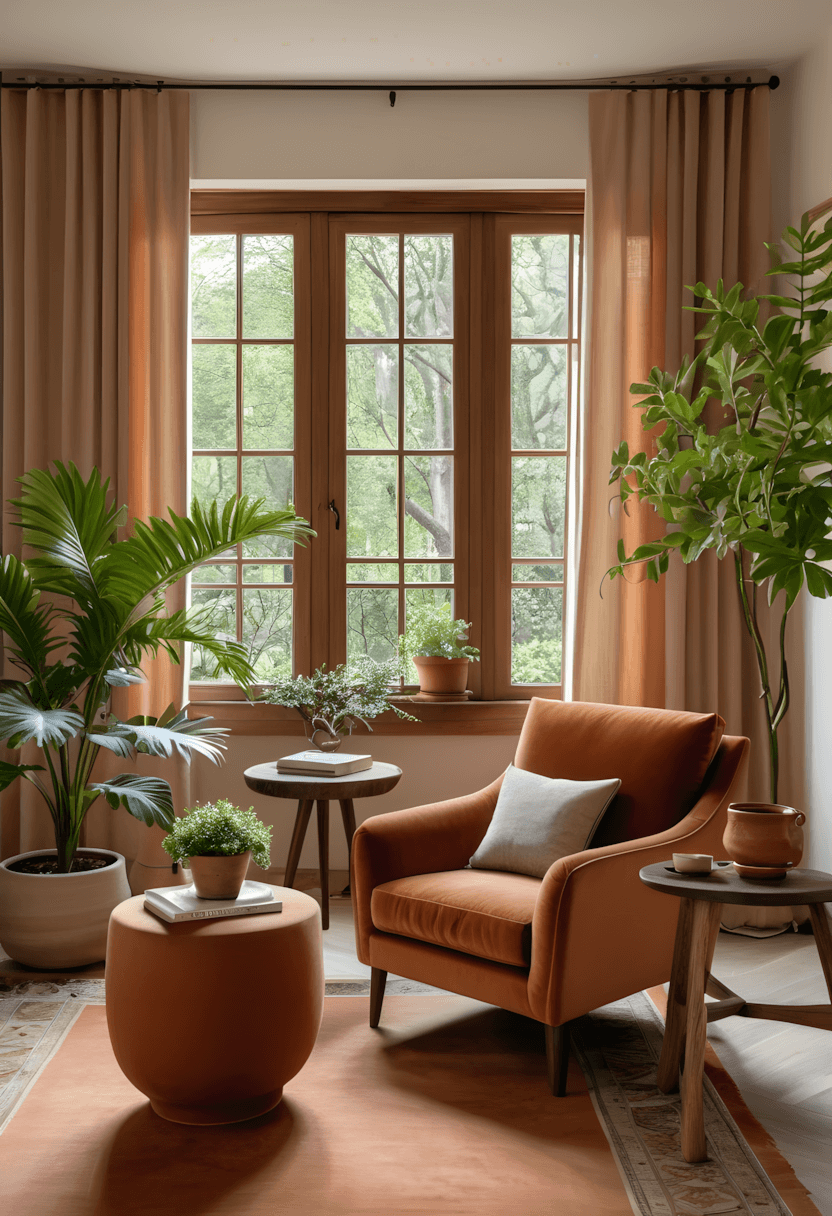
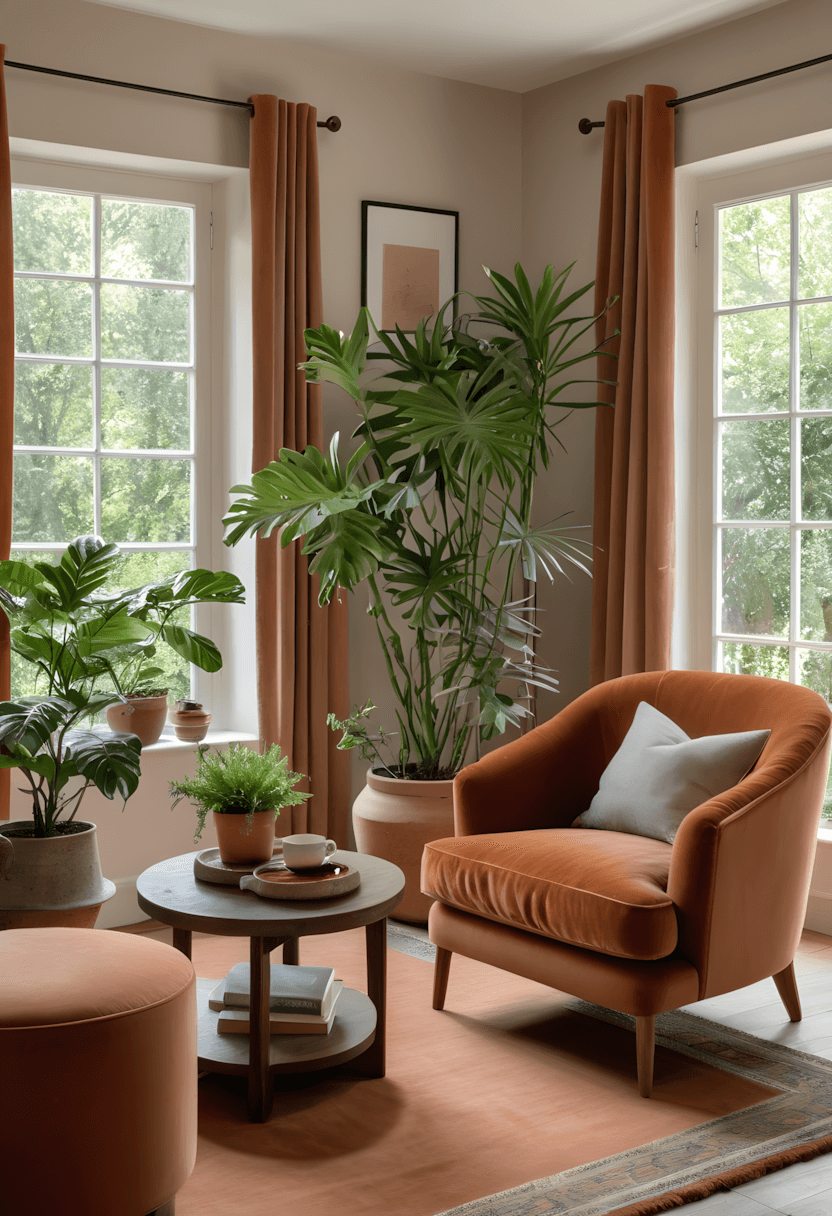
This furniture approach often appeals to those wanting significant terracotta presence through seating elements. Terracotta-toned upholstery typically provides both color impact and comfortable seating while serving as major room focal points.
Design consideration: Rich fabric colors often anchor entire room schemes while natural fiber choices can enhance the organic feel that terracotta naturally promotes.
Practical benefit: Quality upholstery typically offers long-term durability while professional fabric protection can maintain color vibrancy and resist everyday wear and staining.
Creating Your Terracotta-Enhanced Living Space
Through various warm-toned design projects, I’ve observed that successful terracotta integration often balances the color’s natural richness with complementary neutrals and varied textures. These spaces typically succeed because they embrace terracotta’s warmth while preventing color overwhelming through thoughtful distribution and coordination with other design elements.
The terracotta approach often works well for modern homeowners because it typically creates environments that feel both grounded and sophisticated. Effective implementation usually involves starting with smaller accent pieces to test color compatibility, then gradually incorporating larger elements as comfort with the palette develops.
Planning considerations often include assessing your room’s natural light throughout the day, existing furniture colors that need coordination, and personal comfort level with bold color introduction. Many successful projects begin with removable elements like textiles and accessories, allowing homeowners to experience the color’s impact before committing to permanent installations like paint or tile.
Remember: For any electrical work, structural modifications, or built-in installations related to lighting, wall treatments, or architectural features, always consult with licensed professionals to ensure proper installation and code compliance.

